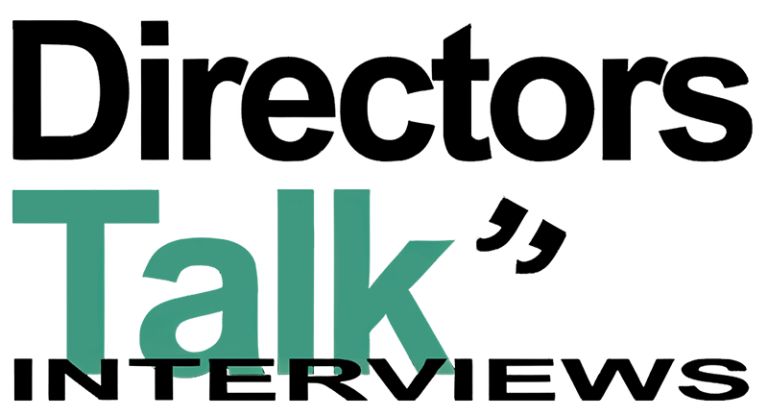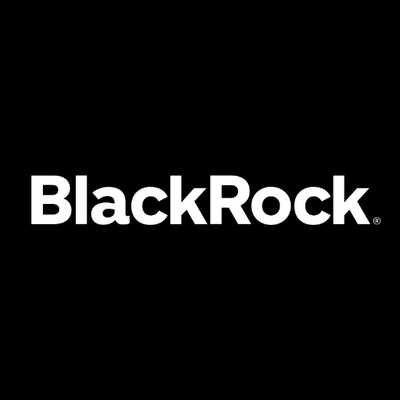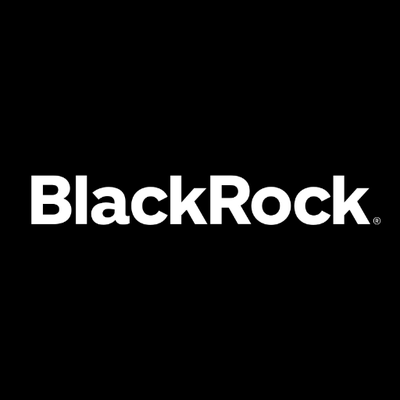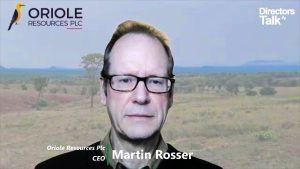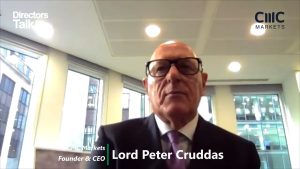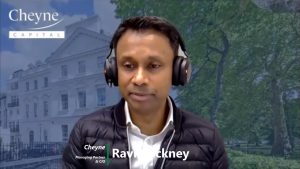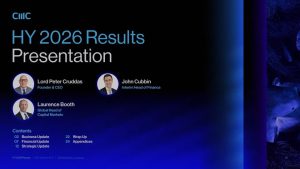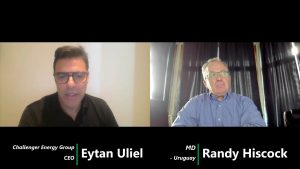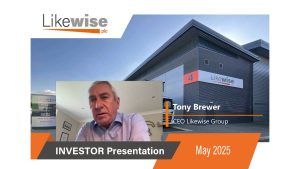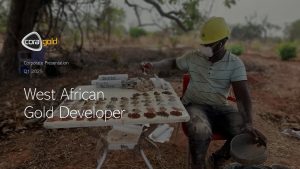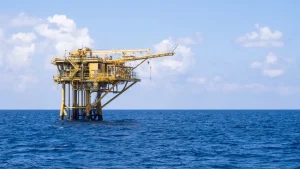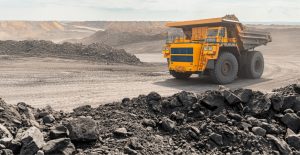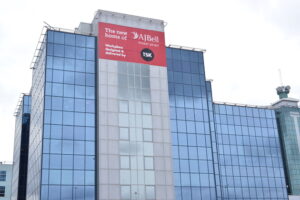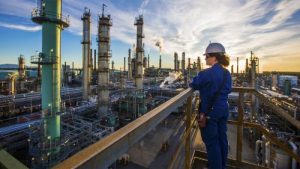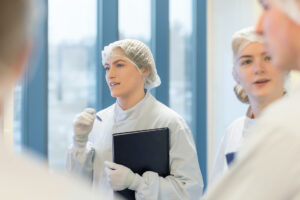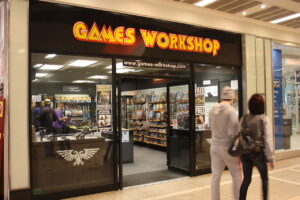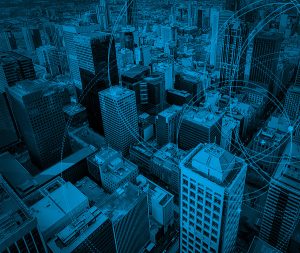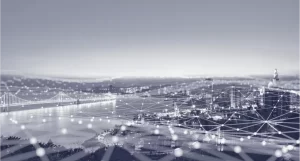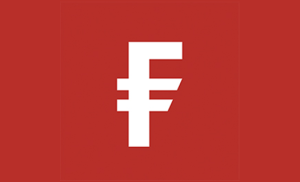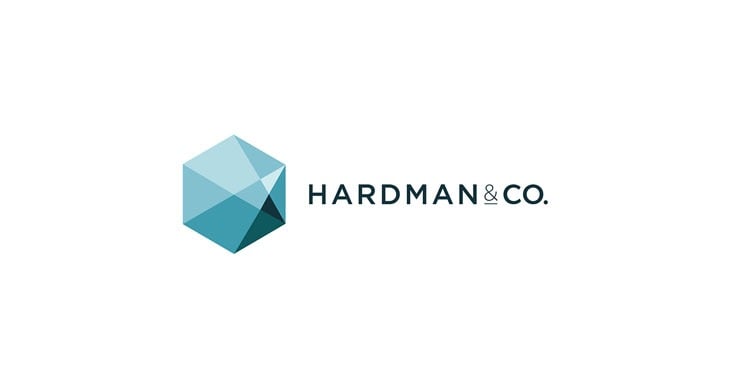BlackRock World Mining Trust plc (LON:BRWM) has announced its final results for the year ended 31 December 2020.
For more information on the Blackrock World Mining Trust and how to access the opportunities presented by mining, please visit www.blackrock.com/uk/brwm
Performance record
| 31 December 2020 | 31 December 2019 | |
| Net assets (£’000)¹ | 930,825 | 757,110 |
| Net asset value per ordinary share (NAV) (pence) | 536.34 | 433.17 |
| Ordinary share price (mid-market) (pence) | 522.00 | 383.00 |
| Reference Index4 – net total return | 4,566.93 | 3,786.17 |
| Discount to net asset value2,3 | 2.7% | 11.6% |
| Performance | ||
| Net asset value per share (with dividends reinvested)3 | +31.8% | +17.2% |
| Ordinary share price (with dividends reinvested)3 | +46.7% | +19.4% |
| Reference Index4 | +20.6% | +15.3% |
| ======== | ======== |
1 The change in net assets reflects market movements, dividends paid and the buyback of ordinary shares into treasury during the year.
2 This is the difference between the share price and NAV per share with debt at par. Further details of the calculation of the discount are given in the Glossary in the Annual Report and Financial Statements.
3 Alternative Performance Measures, see Glossary in the Annual Report and Financial Statements. Performance figures are calculated in sterling terms with dividends reinvested.
4 MSCI ACWI Metals and Mining 30% Buffer 10/40 Index (net total return).
| Year ended 31 December 2020 | Year ended 31 December 2019 | Change % | |
| Revenue | |||
| Net revenue profit after taxation (£’000) | 35,451 | 39,561 | -10.4 |
| Revenue return per ordinary share (pence) | 20.40 | 22.46 | -9.2 |
| Dividend per ordinary share (pence) | |||
| – 1st interim | 4.00 | 4.00 | – |
| – 2nd interim | 4.00 | 4.00 | – |
| – 3rd interim | 4.00 | 4.00 | – |
| – Final | 8.30 | 10.00 | -17.0 |
| Total dividends paid and payable | 20.30 | 22.00 | -7.7 |
| ======== | ======== | ======== |
Chairman’s Statement
HIGHLIGHTS
- NAV per share +31.8%1 (with dividends reinvested)
- Share price +46.7%1 (with dividends reinvested)
- Dividend -7.7%
I am pleased to present the Annual Financial Report for the year ended 31 December 2020.
PERFORMANCE
It is very pleasing to report that over the twelve months to 31 December 2020, the Company’s net asset value per share (NAV) returned +31.8%1 and the share price +46.7%1. In comparison, over the same period the Company’s Reference Index, the MSCI ACWI Metals & Mining 30% Buffer 10/40 Index (net total return), returned +20.6%, our previous reference index, the EMIX Global Mining Index, returned +21.8%, the FTSE All-Share Index returned -9.8% and the UK Consumer Price Index (CPI) increased by 0.6%.
This is an excellent achievement given that our Portfolio Managers have had to navigate the exceptional global economic and social upheaval following the outbreak of COVID-19 and the ensuing pandemic. A detailed commentary on the portfolio’s performance, its positioning, ESG factors and their importance in portfolio construction together with the investment outlook for the forthcoming year can be found in the Investment Manager’s Report. Since the year end and up until the close of business on 1 March 2021, the Company’s NAV has increased by 8.5%.
1 Alternative Performance Measures. All percentages calculated in sterling terms with dividends reinvested. Further details of the calculation of performance with dividends reinvested are given in the Glossary in the Annual Report and Financial Statements.
OVERVIEW
The year ended 31 December 2020 saw enormous disruption brought on by the global pandemic, which led to the partial shutdown of many economies across the world for much of the period. The nature and scale of the disruption was unparalleled but the significant fiscal and monetary response was also unprecedented. This response played an important part in markets rebounding from their March lows. It has also ensured that economies would not suffer large scale or permanent demand destruction outside a few specific industries.
Throughout the COVID-19 outbreak, the Board has had to adjust its mode of operation to minimise the risk the virus has posed to the health and wellbeing of those working on the management and administration of the Company. The Board has continued to meet regularly and since April all scheduled meetings have been held by video conference. The Board has also worked closely with its Manager to ensure that the Company’s operations have not been adversely impacted, that BlackRock and key service providers have established business continuity plans and a good level of service has continued to be maintained. Unfortunately, however, the arrangements for last year’s Annual General Meeting were disrupted as a result of COVID-19 related restrictions and, with the current lockdowns in place, this may well be the case again for the forthcoming Annual General Meeting. The proposed Annual General Meeting arrangements are set out below.
REVENUE RETURN AND DIVIDENDS
The Company’s revenue return per share for the year amounted to 20.40p compared with 22.46p for the previous year, representing a decrease of 9.2%. The main difference was a fall in special dividends received from our investee companies, although the Company benefited from the positive outcome on a tax ruling which was explained in my Interim Statement to shareholders. In August 2020, HM Revenue & Customs accepted that the Company was entitled to claim double tax relief in relation to underlying tax suffered on dividends received from non-UK companies in a number of past accounting periods and subsequently the Company received a corporation tax refund including interest of £2,980,000.
During the year, three quarterly interim dividends each of 4.00p per share were paid on 26 June 2020, 25 September 2020 and 18 December 2020. The Board is proposing a final dividend payment of 8.30p per share for the year ended 31 December 2020. This, together with the quarterly interim dividends, makes a total of 20.30p per share (2019: 22.00p per share) representing a decrease of 7.7% on payments made in the previous financial year and, as in past years, all dividends are fully covered by income. In accordance with the Board’s stated policy, the total dividends represent substantially all of the year’s available income.
Subject to approval at the Annual General Meeting, the final dividend will be paid on 6 May 2021 to shareholders on the Company’s register on 19 March 2021, the ex-dividend date being 18 March 2021. It remains the Board’s intention to seek to distribute substantially all of the Company’s available income along similar lines in the future.
DISCOUNT CONTROL
The Board recognises the importance to investors that the market price of the Company’s shares should not trade at a significant discount to the underlying NAV. Accordingly, the Board monitors the Company’s discount to NAV and will look to buy back shares in normal market conditions if it is deemed to be in shareholders’ interests. During the year, a total of 1,233,913 shares were purchased at an average price of 373.53p per share for a total gross consideration of £4,609,000. All shares have been placed in treasury.
I am pleased to report that the Company’s discount narrowed considerably during December and, at the year end, stood at 2.7%. Accordingly, no further shares have been purchased since the year end, up to and including the date of this report. Subsequent to the year end, the Company’s shares have traded at a premium to the underlying NAV and 3,720,000 shares have been reissued from treasury at an average price of 588.59p per share and an average premium to the estimated NAV of 1.2% for a total gross consideration of £21,896,000. As at 1 March 2021 the premium stood at 1.4%.
Resolutions to renew the authorities to issue and buy back shares will be put to shareholders at the forthcoming Annual General Meeting.
ESG AND SOCIALLY RESPONSIBLE INVESTMENT
As a Board we are conscious that Environmental, Social and Governance (ESG) criteria are increasingly at the forefront of investors’ minds. Given the nature of mining as an industry, your Board has a strong focus on ESG and believes that it is important that our Company’s investee companies operate in a responsible and sustainable way having regard to the interests of all their stakeholders, whether these are shareholders, employees, customers, regulators or suppliers. The Board is also aware that ESG must be considered when investing in the Natural Resources sector and, as a general approach, the Company will not invest in companies which have high ESG risks and no plans to address existing deficiencies. Our Manager, BlackRock, has an Investment Stewardship team which is responsible for protecting and enhancing the value of your Company’s investments through engagement with companies to encourage business and management practices that support sustainable financial performance over the long term.
Climate change is one of the most significant global risks and companies, governments and investors reacted positively during 2020, with firm policy commitments to achieve net zero emissions across many of the major world economies. We expect momentum to build and accelerate in 2021, with profound implications for the global economy. BlackRock believes that its clients are best served by being at the forefront of the transition to ‘net zero’ and in January 2021 announced key actions to help investors prepare for a net zero world, an approach fully supported by your Board. Further information can be found in the Strategic Report below.
ARTICLES OF ASSOCIATION
In light of the circumstances created by the outbreak of the COVID-19 pandemic, the Board is proposing to make amendments to the Articles of Association (the Articles) to enable the Company to hold general meetings (wholly or partially) by electronic means and to give additional powers in respect of postponing or adjourning meetings in appropriate circumstances. The amendments are being sought in response to challenges posed by government restrictions on social interactions as a result of the COVID-19 pandemic, which have made it impossible for shareholders to attend physical general meetings.
The Board’s objective in introducing these changes is to make it easier for shareholders to participate in general meetings through introducing electronic access for those unable to travel and also to ensure appropriate security measures are in place for the protection and wellbeing of shareholders. I should make it clear that these powers would only be used if the specific circumstances or applicable law and regulation required it and the Board’s intention is to always hold a physical Annual General Meeting provided it is both safe and practical to do so. The safety of shareholders and the Company’s third-party service providers must of course remain paramount.
The principal changes proposed to be introduced in the Articles, and their effect, are set out in more detail in the Directors’ Report in the Annual Report and Financial Statements.
ANNUAL GENERAL MEETING
The Company’s Annual General Meeting will be held at the offices of BlackRock at 12 Throgmorton Avenue, London EC2N 2DL on Thursday, 29 April 2021 at 11.30 a.m. Details of the business of the meeting are set out in the Notice of Meeting in the Annual Report and Financial Statements.
At the time of writing, guidance has been issued by the UK, Scottish and Welsh governments, regarding measures to reduce the transmission of COVID-19 in the UK. These measures are, and will continue to be, subject to periodic amendment and currently impose rules on social distancing and limitations on, among other things, public gatherings.
Accordingly, in view of this guidance, the Board is changing the format of the Annual General Meeting again this year to follow the minimum legal requirements for an Annual General Meeting. Only the formal business set out in the Notice will be considered. In line with this guidance, shareholders are strongly discouraged from attending the meeting and indeed entry will be refused if current UK Government guidance is unchanged. Shareholders are encouraged to check the Manager’s website at blackrock.com/uk/brwm for updates to the Annual General Meeting arrangements, as changes may well be required to comply with new guidance and/or government measures.
The Board is aware that many shareholders look forward to hearing the views of the Portfolio Managers and may have questions for them and the Board. Accordingly, the Annual General Meeting will be followed by a webinar to include an introduction from the Chairman and a presentation by the Portfolio Managers, followed by a question and answer session. Shareholders are invited to join the webinar and address any questions they have either by submitting questions during the webinar or in advance by writing to the Company Secretary at cosec@blackrock.com. Details of the exact timing and how to register for this event will be uploaded to the Manager’s website at blackrock.com/uk/brwm.
Notwithstanding these difficult circumstances, the Board looks forward to offering opportunities for shareholders to meet the Portfolio Managers in the future once it becomes safe for all.
OUTLOOK
World equities appear to be on a firmer footing and there is increased optimism now that the uncertainty of the US election has been resolved and the distribution of COVID-19 vaccines provides hope for some return to normality. However, at the time of writing, the full extent of the economic and social impact of the pandemic and the likely duration of the current national lockdowns remain unclear. There are still challenges in the very near term with a resurgence of cases and the emergence of new mutations of the virus. Ongoing policy support from central banks, alongside fiscal stimulus, is therefore vital to limit any permanent economic scarring. Widely administered, effective vaccinations should, however, provide more clarity for governments, businesses and households about the timescale to revive the post COVID-19 economy.
Mined commodity prices performed well during 2020 aided by China’s swift post pandemic recovery and significant government investment in infrastructure. In other regions, risks of pandemic-related supply disruptions and slower than forecast economic recovery may linger into next year but their impact on the sector should be relatively moderate and the dominance of China in determining overall demand growth for industrial metals will remain. The restrained approach to capital spending in the sector in recent years should also cap the rapid emergence of new supply, underpinning the current attractive margins for some time. Your Portfolio Managers therefore believe that the commodity demand and pricing outlook is strong, and they will remain focused on high quality companies with, alongside engagement on ESG matters, strong balance sheets and lower costs, an approach fully supported by the Board.
DAVID CHEYNE
Chairman
4 March 2021
Investment manager’s report
PORTFOLIO PERFORMANCE
We are delighted to report that 2020 delivered another strong year for our Company despite the headwinds caused by the COVID-19 pandemic. Normally when global Gross Domestic Product (GDP) collapses, unemployment rates surge and equity market volatility explodes, the mining sector is one of the worst performing places to be invested but this time things were very different. The years of balance sheet repair, rigid capital discipline and sensible growth plans left the companies well placed to navigate the challenges brought about by the global pandemic.
The table below highlights the Company’s results versus the broader mix of comparators that the Board uses to assess performance. Not only has the share price return been positive for four out of the last five years, but the total share price return moved to a new all-time high on 31 December 2020. In addition, the share price has benefited from a narrowing of the discount especially during the last quarter of 2020. Revenues for the Company have been robust as strong balance sheets have allowed mining companies to continue returning surplus cash to shareholders. However, the decrease in special dividends has meant that this year the Company’s total dividend payment to shareholders could not match last year’s record payment level.
| 2020 Price Change % | 2020 Total Return % | 3 Year Total Return % | 5 Year Total Return % | |
| Share price | 36.3 | 46.7 | 56.3 | 289.5 |
| NAV per share | 23.8 | 31.8 | 36.7 | 227.1 |
| MSCI ACWI Metals & Mining 30% Buffer 10/40 Index | 17.5 | 20.6 | 22.8 | 186.2 |
| FTSE 100 Index | -14.3 | -11.5 | -5.3 | 26.2 |
| FTSE All-Share Index | -12.5 | -9.8 | -2.7 | 28.5 |
| UK CPI | 0.6 | 0.6 | 4.0 | 8.8 |
| ======== | ======== | ======== | ======== |
All performance figures in sterling with dividends reinvested.
Source: BlackRock.
Looking back on 2020 it is hard to know where to start given all the events that influenced returns. Obviously, the key factor was the outbreak of COVID-19 leading to a global pandemic being declared. The huge impact of the virus on people’s physical health during the year varied across the globe. Initially the virus outbreak affected China but by March it had spread to Europe leading to mass lockdowns across the continent. After rapidly moving through Europe, the virus impacted Africa and South America and reached North America in early summer, again leading to lockdowns to prevent it escalating to a level that would put the health service at risk. By late summer data suggested that the measures put into place to bring the virus under control had delivered the hoped-for results and restrictions were gradually lifted across the world, especially as research evidence suggested an effective vaccine was imminent. However, this positive momentum was short lived, as by early autumn the virus was spreading rapidly once again and new mutated strains, feared to be more contagious than the original ones, were causing record high rates of infections in Europe and the United States (US). Governments once again acted by bringing lockdowns back into play just as the year end festive season got under way. At the time of writing, it is clear that these new measures are likely to be in place for several months until confidence that the vaccine roll-out has had the desired effect in controlling the virus.
Outside of the health risks, the virus obviously had a huge impact on economic activity. With large parts of the world in complete lockdown, many industries have been severely impacted including travel, tourism, hotels, leisure and entertainment, whilst others have thrived, the digital economy being the major beneficiary. Anything that could be bought online and delivered to your home saw a massive recovery from the lows in March and many companies have enjoyed staggering share price rallies leaving them at new all-time highs by the year end. Governments have sought to protect as much of the economy and workforce as possible by putting in place financial support packages to protect jobs and support businesses during the lockdown periods. These measures were meant to be short lived, but as the virus has continued to thrive, the economic life support that governments provided has been extended for far longer than originally expected. This has left central bank balance sheets with record levels of debt following this sharp increase in government spending and equally sharp drop in interest rates with many falling to zero or below.
Whilst the pandemic has been the biggest factor during the year, other issues that had been expected to dominate events seem to have passed with only limited impact. In the US, President Trump lost his battle for a second term and now it seems that the Biden administration is likely to deliver sweeping changes on the environment, large increases to government spending and probably a less aggressive tone on Chinese trade, whilst still being tough on human rights and technology. Key for the resources sector will be the policy on spending and the environment. The combination of these two areas seems likely to result in a significant increase in investment to support the transition to a lower carbon economy, which is likely to be associated with an increase in commodity demand, especially for key metals such as copper. The focus on climate will likely see further pressure on fossil fuels and, over time, impact demand for them.
Outside of the US, tensions related to Brexit have been high in Europe and between China and Australia on trade. As the year drew to a close, Brexit terms were finally agreed between the UK and Europe removing a key policy overhang for both economies. The likely outcome is for both economic areas to increase spending to support a recovery from the pandemic and limit the economic fallout from the UK leaving the European Union. In Australia it seems that China is doing everything it can to impact trade between the two countries with bans put in place on a whole range of goods from wine to coal. Should the situation continue to worsen, one key risk for the portfolio is Chinese demand for iron ore given its dominance in the seaborne market. Whilst iron ore is seen as unlikely to be brought into the fight, it is something we watch very closely given the large exposure within the portfolio.
Positives over the last twelve months are that miners have generally benefited from a lack of cost inflation driven by weaker currencies in the first half of the year and the huge fall in the price of oil. In addition, the lack of growth-related spending means that labour costs have seen little upwards pressure from rising demand, as have prices for equipment. Looking into 2021, we expect these trends to reverse given weakness in the US dollar, the recovery in oil prices and a catch up in mining company capital expenditure, whilst labour cost inflation should be manageable given the high rates of unemployment across the world.
After a year that has been disrupted in such a major way, it is very encouraging to see the long-term return and dividend trend for the Company remaining resolute. Many sectors and companies have been unable to pay dividends to shareholders during 2020 and the outlook for recovery in these areas remains uncertain to say the least. It is our hope that investors recognise the value of stable income from resource companies in a world where yields are now so low. Perhaps we will see a rotation of capital into mining companies during 2021?
Since the Initial Public Offering of the Company in 1993 at 100p per share, the shares have delivered a NAV total return of 959.9%. On an annualised basis, the Company’s NAV has returned 9.1% since launch compared to 6.2% and 6.7% for the FTSE 100 Index and FTSE All-Share Index respectively.
MINING SECTOR OVERVIEW
As discussed earlier, the influence of the pandemic has been significant in driving company performance during the year given the scale of government enforced lockdowns and the corresponding impact they had on economic activity. Companies operating in the most affected sectors such as travel, leisure, fitness studios, tourism, high street retail and entertainment saw revenues reduce radically and share prices collapse. On the other side of the equation, beneficiaries saw trends in place prior to the pandemic accelerate in their favour. Digital retail revenues exploded, home media entertainment soared, online grocery deliveries grew market share and at home, fitness services displaced gyms. These swings in economic fortune were reflected in the stock market with a massive divergence in performance by sector. We are pleased to say that despite all of the volatility, for the mining sector the outcome over the twelve month period was not only better than feared but actually extremely positive.
Mining companies were well-positioned to see out the immediate volatility due to the robustness of their businesses. Strong revenues, rock solid balance sheets and long duration debt maturities softened the blow from lockdowns. In addition, immediate closure of capacity in response to virus outbreaks meant that inventories did not build into a supply overhang so that when demand restarted prices were able to react positively to the recovering activity. Finally, with limited amounts of new supply coming onstream, this has left the market looking ‘short’ compared to the likely ongoing demand recovery during 2021. The chart on page 11 of the Annual Report and Financial Statements highlights the sensitivity of ‘basic resources’ to world GDP and no sector is better placed to benefit than the miners.
Despite all of the positives, mining companies in the portfolio were rightly cautious during the initial virus outbreak and, given the timing, this resulted in lower than expected dividend payments to shareholders during the year. This was most acutely reflected in the low level of special dividends paid by the diversified majors whose balance sheets now hold significant levels of excess cash. Shareholders are expecting 2021 to be a year of significant distributions of excess cash, as most companies now have gearing well below the bottom end of guidance levels. For the Company, special dividends accounted for 0.30p per share in 2020 versus 3.80p in 2019, but looking forward this area could potentially be a very supportive factor for income in 2021.
During the year the Company maintained large holdings in key producers of iron ore given the ongoing supply issues and resultant better than expected prices. Our holdings in key beneficiaries such as Vale, Rio Tinto, BHP and Fortescue Metals Group, together with the iron royalty exposures in Vale Debentures and Labrador Iron Ore, all helped to increase the Company’s NAV during the year. Exposure to gold producers in the first half delivered excellent capital growth, as gold prices moved to new record levels on the back of the expansion of central bank balance sheets and collapse in interest rates. Gold shares enjoyed huge share price rallies, as the absence of cost inflation allowed them to capture the higher prices in margins. Also, in precious metals, the platinum group metals (PGM) sector enjoyed equally spectacular returns, with the PGM basket rising to new all-time highs, initially driven by palladium and then taken higher by rhodium during the second half of the year.
ENVIRONMENTAL, SOCIAL AND GOVERNANCE (ESG) ISSUES
The focus on ESG continues to intensify with society increasingly aware of the climate risks facing civilisation. Sustainability is at the forefront of decision making for governments and regulators, climate risk is being embedded into corporate strategy, society is demanding change and there is a growing recognition from the financial community that ESG is a key driver of long-term growth.
We are also challenging the executives of the portfolio companies in which we invest to set out how their current business plans are compatible with achieving a net zero carbon emissions economy by 2050. We are also supporting the adoption of the Task Force on Climate-related Financial Disclosures (TCFD) and the Sustainability Accounting Standards Board (SASB) disclosures to help bring greater focus on climate risk and broader sustainability issues.
The commitment to sustainability was put to test in 2020 with COVID-19 providing an opportunity for targets to be delayed. Encouragingly, we have seen numerous companies reconfirm and increase commitments around carbon emissions, using more sustainable packaging and increasing recycling rates highlighting the importance placed on this theme. Governments have centred stimulus packages around sustainability with a focus on renewable energy, electric vehicles and sustainable building materials, with investors rewarding companies that are embracing and benefiting from sustainability themes in the market.
During the year a number of governments committed to carbon neutrality, most notably China, which is targeting to become carbon neutral by 2060. The scale of investment required to meet this goal is enormous and will be a key driver of China’s GDP growth and commodity demand for decades to come. We view copper and other sustainable materials such as nickel, lithium and cobalt as the clear winners from this transition. Substantial investment will be required into these commodities with the mining sector a clear beneficiary of the energy transition. On the flip side, thermal coal faces increasing regulatory and societal pressure with demand expected to decline as cleaner and cheaper sources of renewable power become available. The Company is well-positioned to benefit from these trends and we expect to build exposure to metals that will benefit from this transition in years ahead.
Within the portfolio, a number of the larger companies provided clarity on their long-term carbon emission targets. Companies such as Anglo American and BHP have committed to reduce their scope 1 & 2 emissions by 30% by 2030 and are looking to achieve carbon neutrality for their own operations by 2040 and 2050 respectively. These commitments will be a key driver of investment going forward with the sector focused on replacing diesel with renewable power sources, investing in technology to reduce their own and their customers emissions and exiting businesses with a high carbon intensity. As at the end of the year, the Company has no exposure to pure-play thermal coal companies.
ESG is a broad and rapidly evolving area and is of critical importance to the mining sector. As investment managers we spend a considerable amount of time understanding the ESG risks and opportunities facing companies and industries in the portfolio. As an extractive industry, the mining sector naturally faces a number of ESG challenges given its dependence on water, its carbon emissions and the geographical location of assets. However, we feel the sector under-emphasises the many positive ESG benefits it provides to society through the provision of critical infrastructure, taxes and employment to local communities, providing materials essential to human progress, enabling the carbon transition through the production of sustainable metals and continuing to improve health and safety standards across the industry.
While the majority of the Company’s holdings have advanced their ESG credentials during the year, particularly around climate change and COVID-19 support provided to their host communities and employees, there have sadly also been some ESG controversies. The most notable was the destruction of historical caves at Juukan Gorge on the land of the Puutu Kunti Kurrama and Pinikura people (PKKP) in the Pilbara region of Western Australia. This tragic incident has cast a dim light over Rio Tinto’s ESG practices which ultimately saw the removal of the CEO and a number of other key executives. Following the Australian parliamentary inquiry into Juukan Gorge and a review of the Native Title Act, we expect increased scrutiny over land access and regulatory approval for future projects which adds uncertainty to Australian iron ore supply longer term.
Norilsk Nickel has been under significant scrutiny following an oil spill which saw circa 21,000t of diesel spilled into the Arctic region. Norilsk has been ordered to pay US$1.9 billion in fines and damages.
Vale has been under ESG scrutiny following the tailings dam incidents at Samarco in 2015 and Brumadinho in 2019. Both events have been extremely tragic and resulted in a heavy focus on tailings dam management across the sector. Vale is committed to restoring Brumadinho and continues to make good progress rebuilding its pact with society. Vale has implemented a number of changes to its tailings dam management process following an independent review to ensure it is aligned with the highest level of international practices. As confidence increases in the improved ESG credentials of the company, we would expect the shares to re-rate higher to reflect the reduced ESG risk.
ESG is an integral element of the investment process used to build and manage the portfolio. As a general approach the Company will not invest in companies which have high ESG risks and which have no plans to address existing deficiencies.
We are also challenging the executives of the portfolio companies in which we invest to set out how their current business plans are compatible with achieving a net zero carbon emissions economy by 2050. We are also supporting the adoption of the Task Force on Climate-related Financial Disclosures (TCFD) and the Sustainability Accounting Standards Board (SASB) disclosures to help bring greater focus on climate risk and broader sustainability issues.
There will be cases where a serious event has occurred and in that case we will assess whether the company is taking appropriate action to resolve matters before deciding what to do. Depending on our assessment of the reaction of the Board and management to the event, we will take appropriate measures, which may include the full disposal of shares.
In addition there will be companies which have derated on the back of an ESG event or generally poor ESG practices and there may be opportunities to invest at a discounted price. However we will only invest in these value-based opportunities if we are satisfied that there is real evidence that the company’s culture has changed and that better operating practices have been put in place. In these cases, we will actively engage with management and closely monitor their remedial programmes.
Should a company achieve such a change, the shares can go from trading at an ESG discount to more normal multiples or even an ESG premium which will be to the benefit of the Company and all stakeholders.
SHAREHOLDER RETURNS
Despite 2020 being a slightly lower year for income compared to the record of 2019, compared with other sectors it was an outstanding result. Only a handful of companies either cancelled dividend payments or deferred them until later in the year which is remarkable given the scale of economic impact caused by global lockdowns. The principal difference between the two years was the lower level of special dividends in 2020 which was mostly in response to cautiousness rather than an inability to pay. What was most pleasing was the adherence to policy on shareholder returns, as normally companies would have been forced into change during recessions. Dividends generally remained robust in absolute terms as shown in the chart on page 14 of the Annual Report and Financial Statements. Within the data the growth seen from gold companies has been spectacular.
A number of gold producers announced 100% increases in dividends, admittedly from low levels, and a handful did this not once but twice during the year. Newmont Corporation enhanced its returns policy by committing to a new gold price linked dividend payment policy which at current prices should lead to further increases in payments. In general, the year was far better than feared and the outlook for 2021 looks particularly promising.
GROWTH AND RESOURCE REPLENISHMENT
Just as in prior years this theme is the hardest to capture, especially when it comes to production growth, as companies have remained disciplined in allocating capital to new projects. Whilst this is challenging in terms of identifying exposure to growth, it is extremely positive for commodity prices due to the lack of new supply and even more so when the demand outlook is as positive as it now appears.
Within the portfolio, Anglo American remains the major contributor with the highest rate of production growth amongst the diversified miners, driven by new copper production coming from the Quellaveco project in Peru and longer term the Woodsmith polyhalite mine in Yorkshire. In copper, First Quantum Minerals has ramped-up its new Cobre Panama mine and is now able to use cash flow from higher production and better prices to reduce debt to more manageable levels. Ivanhoe Mines is on track to bring its new Kamoa-Kakula mine into production by the end of the year and ramp-up to capacity during 2022. Nevada Copper was the biggest detractor from performance within the growth area, as the company was forced to delay their ramp-up in capacity due to COVID-19 and, as a result, needed to raise additional debt at expensive rates and highly dilutive share issuance. Finally, the Company continued to support Nickel Mines as it raised capital to further grow production through exposure to additional production lines in Indonesia. Since the Company first supported Nickel Mines at its IPO in August 2018, the shares have risen by 2.5x and, in addition, the company paid an inaugural dividend in July 2020.
The other source of growth for companies is mergers and acquisitions (M&A) activity, but this has also been constrained by the sector’s focus on capital discipline. Gold has been the busiest area over the last few years and this continued in 2020 where the largest transaction was the merger between Northern Star Resources and Saracen Mineral Holdings. Key to this deal was the fact that each company bought a fifty percent stake in the Australian ‘Super Pit’ in Kalgoorlie from Newmont Corporation and Barrick Gold back in 2019. Simplifying the ownership structure should allow cost saving synergies to be captured, significant tax savings and the fast tracking of value-added investment decisions. Also, in gold, SSR Mining and Alacer Gold combined in a merger of equals, once again driven by cost synergies and increasing the diversity of the asset base. For the Company, the most beneficial deal was the announced purchase of Teranga Gold by Endeavour Mining. The Company bought its exposure in Teranga Gold in December 2019 when the business sought finance for the purchase of the Massawa gold project from Barrick Gold. Since then, the shares have risen almost threefold and the ability to retain ongoing exposure to the assets through a holding in Endeavour Mining means additional value can accrue to the Company over time.
Outside of gold there were some smaller deals that impacted the portfolio. First, the sell down by Sheffield Resources in its Thunderbird Mineral Sands Project to Yansteel. This should see the project move forward by unblocking the financing hurdle that faced Sheffield Resources. Also, in Australia, Iluka Resources completed the demerger of its MAC iron ore royalty into a new listed company. It is believed that by placing the royalty into a separately listed company it will allow the new group, called Deterra Royalties, to diversify into other royalties. Lastly, Independence Group announced the purchase of a stake in the Greenbushes Lithium Mine via a holding in the joint venture that owns half the operation. The Company managed to buy into the deal during the capital raise to fund the transaction and the shares have risen significantly as the market rerates the combined business more akin to a higher multiple used for valuing ESG sustainable companies from the lower multiples normally applying to mining companies.
BASE METALS
The rerating of base metal prices since the virus-hit lows of March has been exceptional, with all base metal prices finishing the year higher. However, with the exception of copper, it is worth noting that average prices were actually lower on a year-on-year basis reflecting the steep COVID-19 drawdown in March. As we have seen in similar demand shock periods, financial investors used the base metals forward markets to express a negative view on the global economy. Much of the price rally can be explained by the broad-based pick-up in end demand. However, there were a number of other factors which intensified the rally such as COVID-19 related supply impacts, a collapse in scrap collection, speculative inflow into commodities and green related stimulus packages benefiting copper in particular.
Selected commodity price changes during 2020
| Price 31/12/2020 | % Change 12 month | % Change Avg 2020 vs. 2019 | |
| Precious Metals US$/oz | |||
| Silver | 26.5 | 47.2 | 26.6 |
| Gold | 1,897.8 | 24.8 | 27.1 |
| Platinum | 1,075.0 | 10.7 | 2.4 |
| Palladium | 2,370.0 | 23.4 | 42.5 |
| Base Metals US$/lb | |||
| Tin | 9.3 | 19.6 | -8.0 |
| Zinc | 1.2 | 19.7 | -11.0 |
| Lead | 0.9 | 10.8 | -8.6 |
| Aluminium | 0.9 | 10.8 | -5.0 |
| Copper | 3.5 | 26.0 | 2.9 |
| Nickel | 7.5 | 18.7 | -0.7 |
| Industrial Commodities | |||
| Coking Coal US$/t | 101.4 | -25.4 | -29.5 |
| Thermal Coal US$/t Newcastle | 80.5 | 18.9 | -22.8 |
| Iron Ore – fines 62% Fe China Import US$/t | 161.0 | 73.1 | 16.3 |
| Uranium US$/lb | 30.0 | 20.0 | 13.6 |
| Lithium Carbonate CIF to China spot 99% US$/t | 7,430.4 | 31.0 | -36.6 |
| ======== | ======== | ======== |
Sources: Datastream and Bloomberg.
Copper, the standout base metal in 2020, led the recovery. Its price bottomed at US$2.10/lb in March but subsequently rallied circa 70% to finish the year at US$3.53/lb, a price level not seen since 2013, with the market benefiting from strong Chinese imports for investment into the state grid, property and strategic stockpiling, a feature we have not seen in the market for a number of years. This surge in demand saw the copper market move into a deficit by year end, with investors beginning to reassess the longer-term demand picture as governments prioritise ‘green-related’ stimulus into renewables, electric vehicles and the grid which has the potential to see medium-term copper demand increase by 3% to 5% per annum. We view copper as a clear beneficiary from decarbonisation spending, which is a key multi-decade theme for the sector. Copper supply fundamentals also remain supportive with production impacted in key regions such as Peru and Chile, growth projects delayed by 12 to 24 months and scrap underperforming. We have previously talked about the long-term supply challenges the copper industry faces and, given the acceleration in green-related demand, we continue to remain positive on the commodity.
The Company has a very large exposure to copper which represented 19.2% of the portfolio at the year-end and was the key driver of performance in 2020. Standout performers included Freeport-McMoRan which has seen a sharp inflection in free cash flow as the Grasberg underground mine ramps-up, First Quantum Minerals which is rapidly deleveraging as its flagship Cobre Panama mine increases production and OZ Minerals which has exceeded expectations at its newest asset Carrapateena and continues to extract value at Prominent Hill. As we look into 2021, Ivanhoe Mines will move from developer to producer at the world-class Kamoa-Kakula project and we are set to receive higher dividend payments from Cerro Verde.
The other base metal that the Company has significant exposure to is nickel which saw its price rise by 18.7% in 2020. The nickel market has been in surplus for much of 2020. However, it tightened in Q4 as Chinese stainless steel demand recovered along with the rest of the world. A striking feature of the nickel market has been the rapid growth in nickel pig iron (NPI) production from Indonesia, which has overtaken China as the largest producer of NPI globally. The Company has directly benefited from this via its investment in Nickel Mines, an Australian listed nickel producer, that owns three nickel projects in Indonesia which are operated under an agreement with Tsingshan. Nickel Mines has been a remarkable investment for the Company with attributable production to grow from zero to circa 50ktpa Ni in under five years since the IPO of the company in 2018.
BULK COMMODITIES
Iron ore was the standout commodity during 2020, with the price rallying more than 70% to finish the year at US$161/t. It was a perfect storm for the iron ore market which saw record steel demand in China, coupled with ongoing supply issues in Brazil. Following the tragic Brumadinho tailings dam incident at the beginning of 2019, the iron ore market has significantly tightened with the price more than doubling. This tightness was intensified during 2020 with China surpassing expectations in ramping its steel production back above pre-COVID-19 levels by the middle of the year, as the government increased infrastructure investment and eased the property sector in an effort to support the economy. China’s overall steel output grew by 5% in 2020 to 1.05Bt and is poised to remain strong during 2021, underpinned by existing infrastructure projects. We would expect to see a moderation in steel demand during the second half of 2021 as policy stimulus is phased out. However, we still expect China’s steel output to remain strong with the iron ore market to be in deficit again in 2021.
Supply disruption was a key feature of the iron ore market in 2020. This was largely centred on Brazil which saw Vale miss the mid-point of its original 2020 guidance by over 40Mt, as operations were initially hampered by excessive rainfall and then by COVID-19. The Australian iron ore producers performed far better with BHP, Rio Tinto and Fortescue Metals Group seeing minimal operational impact from COVID-19. However, supply risks have risen following the Australian parliamentary inquiry into the destruction of Juukan Gorge and the review of the Native Title Act in Australia. This has the potential to force changes to current and future mine approvals, consequently impacting production and capital expenditure for the Australian iron ore producers.
We would expect supply tightness to begin to ease from the end of 2021, as Vale continues to bring tonnes into the market and China looks to increase its use of scrap steel. Market commentators have talked about a ‘stronger for longer’ iron ore market which seems plausible and underpins a strong dividend outlook for the major producers. However, the last two years of elevated iron ore prices have incentivised new production into the market. The world class Simandou iron ore project has received approval from the Guinean government to be developed by a China led consortium. Despite the high capital intensity of the asset due to the associated infrastructure development, Simandou offers strategic benefits to China reducing their dependency on Australian iron ore and also providing them with another source of high-grade supply. The ultimate outcome of these additional projects coming to the market is likely to result in a larger oversupply of iron ore once China’s steel production starts to moderate longer term.
The Company has benefited from the high level of iron ore prices during 2020 through its exposure to BHP, Rio Tinto, Vale (both equity and the Debentures), Fortescue Metals Group and Labrador Iron. These producers are enjoying record margins given the decline in their operating cost base since the last peak in the iron ore price and have returned a significant proportion of free cash flow in dividends. Given our expectation of another robust year for the iron ore market, we expect another strong year for shareholder returns in 2021.
Coking coal is another key steel raw material but unlike iron ore the price was down 25% in 2020. Coking coal has been a casualty of the Australia-China trade dispute, with China placing an informal ban on Australian coal imports leaving circa 30% of Australia’s metallurgical coking coal looking for a new home. A two-tier market has developed between the landed China seaborne price which is trading at a US$75/t premium to the equivalent quality of coking coal from Australia. While there has been some rebalancing of trade flows with Canada and Russia looking to fill the supply void, however, given the scale of the deficit, we would expect that China will allow imports from Australia again over the course of 2021.
The Company’s coking coal holdings include Teck Resources and BHP. Teck Resources has lagged the sector year-to-date given reduced coking coal demand in Europe, as well as the dramatic fall in the oil price which has impacted Fort Hills, its Canadian oil sands asset. With Teck Resources able to take advantage of the strong coking coal price in China and the better oil price outlook, we are looking for improved performance in 2021.
PRECIOUS METALS
2020 was a stellar year for the precious metals with a new all-time high gold price set at US$2,064/oz in August. Gold and silver prices were up 25% and 47% respectively which follows strong performance for both commodities in 2019. The huge expansion in central bank balance sheets, as governments adopted a ‘whatever it takes’ approach in response to COVID-19, has seen a collapse in rates globally with the US 10 year real rate moving into negative territory in 2020. This, combined with the US Federal Reserve moving to an average inflation target and willing to tolerate periods of higher inflation, we believe has opened the door for real rates to reach never previously seen low levels and a new higher trading range to be established for gold.
An encouraging feature of the gold equity market in recent years has been the increased focus on shareholder returns, with higher gold prices translating into higher margins and dividends. The gold sector has generated decent returns in recent years with balance sheets deleveraged and growth projects rationalised, which has seen several companies materially raise dividends during 2020. Key dividend increases for the Company include Newmont Corporation with a 79% dividend increase announced at the beginning of the year which was supplemented by a new gold-linked dividend policy, Barrick Gold increasing its quarterly dividend by 80% and B2Gold by 100%. Given the continued strength in the gold price and the increased dividend commitment from the sector, we look forward to further dividend growth in 2021.
The last few years have been a busy period for M&A in the gold sector. The end of 2018 saw the merger of Barrick Gold and Randgold Resources followed quickly by the takeover of Goldcorp by Newmont Corporation. This was then followed by the merger of Barrick Gold and Newmont Corporation’s Nevada gold assets to create a massive market-leading US gold business. The gold M&A market has been more subdued in 2020, the most notable transaction being the merger between Northern Star Resources and Saracen Mineral Holdings, its Joint Venture partner in the Kalgoorlie ‘Super Pit’. Northern Star Resources has a proven track record of value creation from M&A where it has grown from a single asset, 100koz producer in 2010, to today being over a 1Moz producer.
Other notable contributors to performance this year include Newmont Corporation which offers the most attractive dividend yield of the senior producers, Wheaton Precious Metals which benefited from the strong increase in the silver price which is seeing rising industrial demand via increased solar investment and our exposure to the Russian gold producers, Polyus and Polymetal International.
The PGMs continued their strong performance in 2020 with the palladium and platinum price up 23% and 11% respectively. We continue to remain positive on the PGM space and believe the PGM basket will remain high relative to history given limited new supply projects, increasing PGM loadings for auto catalysts to meet emissions standards and a sustained global auto recovery. In terms of supply, a combination of Anglo American Platinum’s converter failure and South Africa’s COVID-19 lockdowns, saw 2020 refined platinum and palladium supply fall by 22% and 24% respectively. In the year ahead, the PGMs we see as particularly strong are palladium, with the market forecast to remain in deficit in 2021 and rhodium the less talked about PGM which is seeing increasing demand to meet Nitrogen Oxide (NOx) emission standards. The move in the rhodium price in 2020 has been nothing short of spectacular at +280%. The Company has continued to increase its pure play PGM exposure via its holdings in Impala Platinum, Northam Platinum and Sibanye Stillwater, which combined equated to 4.7% of the portfolio at the end of December. In addition, the Company also has exposure to PGMs via its holding in Anglo American (7.2% of the portfolio) which owns 79% of Anglo American Platinum and Norilsk Nickel (1.1% of the portfolio).
ROYALTIES AND ILLIQUID INVESTMENTS
The Company currently has one unquoted investment, the OZ Minerals Brazil Royalty, representing 1.9% of the portfolio as at the end of December 2020. The Company has an additional royalty investment, Vale Shareholder Debentures, representing 4.1% of the portfolio. The latter is technically listed in Brazil but due to the limited liquidity it is covered in this section. Together the two royalty investments make up 6.0% of the portfolio. These, and any future investments, will be managed in line with the guidelines set by the Board as outlined to shareholders in the Strategic Report.
OZ MINERALS BRAZIL ROYALTY CONTRACT (1.9% OF THE PORTFOLIO)
In July 2014 the Company signed a binding royalty agreement with Avanco Minerals. The Company provided US$12 million in return for a Net Smelter Return (net revenue after deductions for freight, smelter and refining charges) royalty payments comprising 2% on copper, 25% on gold and 2% on all other metals produced from mines built on Avanco’s Antas North and Pedra Branca licences. In addition, there is a flat 2% royalty over all metals produced from any other discoveries within Avanco’s licence area as at the time of the agreement.
In 2018 Avanco was acquired by OZ Minerals an Australian based copper and gold producer for A$418 million, with the royalty now assumed by OZ Minerals. Since our initial US$12 million investment was made, we have received US$15.1 million in royalty payments, with the royalty achieving full payback on the initial investment. As at the end of December 2020, the royalty was valued at £19.8m (1.9% of the portfolio) which equates to a 251.1% total return since our investment.
In November 2019 OZ Minerals approved the development of the Pedra Branca underground mine and released a feasibility study and mine plan detailing an eight-year life of mine. This is OZ Minerals’ second operating asset in Brazil and is expected to produce more than twice the amount of copper and gold production per year than the existing Antas Mine. Mining at Antas is scheduled to cease during 2021, after which ore from Pedra Branca will be processed through the existing facilities, making Pedra Branca a lower risk, capital light development project. Despite the challenges of operating in Brazil during COVID-19, we are pleased to report that the first development ore from Pedra Branca was trucked to the Carajas Antas hub during the September quarter, leaving the asset well-positioned to ramp-up production during the first half of 2021.
From a valuation perspective, the discount rate applied to Pedra Branca has been moved to a level that reflects the project moving from development status to production. In addition, with the increasing amount of royalty revenue being generated from gold in line with the increase in the gold price, we have in part reflected a lower discount rate applied to gold royalties, in line with how the market prices precious metals royalties. This, in addition to minor changes to commodity prices, has resulted in a valuation of £19.8 million for the royalty which has been approved by the Directors after considering the independent valuation of the Royalty carried out by SRK Consulting (UK) Limited.
VALE SHAREHOLDER DEBENTURES
In early 2019 the Company completed a transaction to increase its holding in the Vale Shareholder Debentures. The Vale Debentures consist of a 1.8% net revenue royalty over Vale’s Northern System and Southeastern System iron ore assets in Brazil, as well as a 1.25% royalty over the Sossego copper mine. The iron ore assets are world class given their grade, cost position, infrastructure and resource life which is well in excess of 50 years. Prior to this transaction, the Company had a 0.5% position in these securities versus the current level of 4.1%.
The iron ore market has significantly tightened since Vale’s tragic tailings dam accident at the beginning of 2019 which saw the iron ore price rally over 30%. This was further intensified in 2020, with Vale failing to meet its annual production guidance due to severe rains in the first half of the year, as well as COVID-19 related operating challenges. These supply issues combined with record steel demand in China, saw the iron ore price increase by more than 70% in 2020. The Debentures have directly benefited from the move higher in the iron ore price with the Company enjoying increasing distributions as shown in the chart on page 20 of the Annual Report and Financial Statements. Vale is expected to spend US$13 billion restoring the communities and environment impacted by the Brumadinho incident between 2019 and 2030. However, it is important to note that this cost is not borne by the Debentures as they are a revenue royalty with payments directly linked to the iron ore price which appreciated during the first half of 2020. It is also important to highlight that the operations impacted by the incident are in the Southern and Southeastern System, with the Vale Debentures currently only making royalty payments from the Northern System.
The chart on page 20 of the Annual Report and Financial Statements shows the historic distributions paid by Vale to the owners of the Debentures and in 2020 this amounted to US$2.3 million for the Company. The payments are expected to grow further once royalty payments commence on the Southeastern System in 2024 and volumes from the newly commissioned iron ore project S11D continue to ramp-up. Vale is looking to further increase production from the Northern System from 206mtpa today to 260mtpa longer term which provides additional upside to our original expectations for the Debentures.
Whilst the Vale Debentures are a royalty, they are also a listed security on the Brazilian National Debentures System. However, shareholders should be aware that historically there has been a low level of liquidity in the Debentures and price volatility is to be expected. Since the acquisition in February 2019 the Debentures have paid out a total of R4.56/debenture resulting in a 20% distribution return in two years. The securities were priced at R48.2/debenture at the end of 2020 versus a price of R23 when the holding was last added to.
We continue to actively look for opportunities to grow royalty exposure given it is a key differentiator of the Company and an effective mechanism to lock-in long-term income, which further diversifies the Company’s revenues.
FIXED INCOME SECURITIES
The Company continues to have a small but decreasing proportion of the portfolio allocated to fixed income securities, due to the ongoing decline in interest rates leaving the arbitrage return net of tax less attractive than alternative investments. At the end of the year 4.2% of the portfolio was invested in fixed income securities. Outside of the decline in interest rates, the ongoing improvement in corporate balance sheets meant both repayment of expiring bonds and limited new issuance further reduced the opportunities available in the market. If current conditions continue then revenue from this area will decline further, but it is hoped that this will be covered by increases from other areas such as ordinary dividends. During the year one new holding was added to this part of the portfolio, ArcelorMittal Mandatory Convertible Notes (MCNs) purchased as part of a capital raising during the summer. Returns on this investment have been spectacular so far given the recovery in steel markets and it is hoped that, with the underlying company now committed to stepping up shareholder returns, income from the MCNs will rise in 2021. As ever, we continue to look for new deals but with a very strict focus on return versus quality.
DERIVATIVES ACTIVITY
The Company from time to time enters into derivatives contracts, mostly involving the sale of ‘puts’ and ‘calls’. These are taken to revenue and are subject to strict Board guidelines which limit their magnitude to an aggregate 10% of the portfolio. During 2020 income generated from options was £8.8 million net of contracts repurchased. This is higher than in the last couple of years, as the spike in volatility during the peak of the pandemic presented a range of great opportunities to monetise premiums. The majority of options expired out of the money as options were written with short lives and share prices rapidly recovered from the pandemic low point. Given the spike in volatility during the year, it is unlikely that this will be repeated in 2021 and therefore income from options is likely to be lower. At the end of 2020 the Company had 2.6% of the net assets exposed to derivatives.
GEARING
Debt, which can be drawn down or repaid at any time, is used in the portfolio to take tactical advantage of market volatility and opportunities, as well as enhance overall returns over the medium to long term. At 31 December 2020, the Company had debt net of group cash amounting £114.8 million representing gearing of 12.3%. Over the last few years, the amount of gearing allocated against higher yielding mining company corporate bonds has declined due to increased returns available through the equities as well as reduced availability of bonds that meet our valuation criteria. For 2020 the majority of the Company’s debt was once again hedged against the fixed income portfolio and royalty positions.
OUTLOOK AND STRATEGY FOR 2021
This time last year we made the following bold statement: ‘After the strong returns generated during the year it might seem foolish to expect another year of competitive total returns for the mining sector in 2020 but with macro risks seemingly on the turn for the better this might easily play out’. With the benefit of hindsight, it is clear that whilst our forecast of strong returns played out, we never expected the scale of disruption caused by the COVID-19 pandemic. This leads us to the often used quote from Mark Twain ‘it is difficult to make predictions, particularly about the future’ so this year we will limit our forecast to that of another strong year of expected returns without linking it to seemingly unforecastable macro events.
Our confidence on returns comes from two areas: strong corporate outlook and commodity market imbalances. The former is based on the robust balance sheets, higher profit margins and five-year track record of shareholder return discipline. The combination of all of these gives us conviction when expecting companies to do the right thing for shareholders when faced with windfall gains from better than expected market conditions. With regard to the latter, as mentioned earlier in the report, the expected pick-up in fiscal spending around the world is set to drive commodity demand growth to levels above that of the last decade or longer. In addition, the underinvestment into supply over the last five years or more means that industrial commodity prices should be well supported in 2021.
As always there are risks to the outlook and we are well aware that margins are elevated, especially for producers of iron ore where these are well above historic levels. Given the mean reverting nature of commodity markets, these will at some point contract despite ongoing supply side issues and better than expected demand from steel producers. In addition, the pressure on management to spend money on growth projects is at its greatest when balance sheets are strong, metal prices are high and demand is rising. We hope that any investment decisions are thoroughly reviewed to limit the chances of value destroying history repeating itself.
In summary, we believe that with the demand outlook so strong there could be a few years of positive total returns ahead given how long it takes for new supply to come into production. The goal for the Company continues to be to deliver a superior total return for shareholders through the cycle from a combination of capital growth and a premium yield to that generally available from the mining sector and to keep generating competitive returns compared to world markets.
EVY HAMBRO AND OLIVIA MARKHAM
BLACKROCK INVESTMENT MANAGEMENT (UK) LIMITED
4 March 2021
TEN LARGEST INVESTMENTS
1 + Vale1, 2 (2019: 3rd)
Diversified mining group
Market value: £114,280,000
Share of investments: 10.9% (2019: 8.6%)
One of the largest mining groups in the world, with operations in 30 countries. Vale is the world’s largest producer of iron ore and iron ore pellets, and the world’s largest producer of nickel. The group also produces manganese ore, ferroalloys, metallurgical coal, copper, platinum group metals, gold, silver and cobalt.
2 – BHP3 (2019: 1st)
Diversified mining group
Market value: £79,817,000
Share of investments: 7.6% (2019: 9.7%)
The world’s largest diversified mining group by market capitalisation. The group is an important global player in a number of commodities including iron ore, copper, metallurgical coal, manganese, nickel, silver and diamonds. The group also has significant interests in oil, gas and liquefied natural gas.
3 – Rio Tinto3 (2019: 2nd)
Diversified mining group
Market value: £77,724,000
Share of investments: 7.5% (2019: 9.3%)
One of the world’s leading mining groups. The group’s primary product is iron ore, but it also produces aluminium, copper, diamonds, gold, industrial minerals and energy products.
4 = Anglo American (2019: 4th)
Diversified mining group
Market value: £75,031,000
Share of investments: 7.2% (2019: 6.1%)
A global mining group. The group’s mining portfolio includes bulk commodities including iron ore, manganese, and metallurgical coal, base metals including copper and nickel and precious metals and minerals including platinum and diamonds. The group has mining operations globally, with significant assets in Africa and South America.
5 + Freeport-McMoRan (2019: 16th)
Copper producer
Market value: £54,595,000
Share of investments: 5.2% (2019: 2.2%)
A global mining group which operates large, long-lived, geographically diverse assets with significant proven and probable reserves of copper, gold and molybdenum.
6 = Newmont Corporation (2019: 6th)
Gold producer
Market value: £46,903,000
Share of investments: 4.5% (2019: 4.4%)
Following the acquisition of Goldcorp in the first half of 2019, Newmont is the world’s largest gold producer by market capitalisation. The group has gold and copper operations on five continents, with active gold mines in Nevada, Australia, Ghana, Peru and Suriname.
7 – Barrick Gold (2019: 5th)
Gold producer
Market value: £43,339,000
Share of investments: 4.1% (2019: 4.4%)
Following the merger with Randgold Resources in 2018, Barrick Gold is the second largest gold producer by market capitalisation and has operations and projects in 15 countries across the world. In 2019, the group successfully established a joint venture with Newmont across their Nevada assets to maximize the synergies across both sets of assets.
8 + Wheaton Precious Metals (2019: 9th)
Precious metals streaming group
Market value: £34,374,000
Share of investments: 3.3% (2019: 3.7%)
A precious metals streaming group. The group purchases silver and gold production from mines that it does not own and operate. The group has streaming agreements with 22 operating mines worldwide including Newmont’s Penasquito, HudBay’s Constancia and Vale’s Salobo and Sudbury mines.
9 + OZ Minerals2,4 (2019: 10th)
Copper producer
Market value: £33,544,000
Share of investments: 3.2% (2019: 3.3%)
An Australian based mining company, with a primary focus on copper. The company owns and operates the high quality Prominent Hill copper-gold mine and the Carrapateena copper-gold project, both situated in South Australia. In 2018 OZ Minerals successfully acquired Avanco Resources, with the Company’s royalty assumed by OZ Minerals.
10 – First Quantum Minerals1 (2019: 7th)
Copper producer
Market value: £29,954,000
Share of investments: 2.9% (2019: 4.2%)
An established growing copper mining group operating seven mines including the ramp-up of their newest mine, Cobre Panama, which declared commercial production in September 2019. The group is a significant copper producer and also produces nickel, gold and zinc.
1 Includes fixed income securities.
2 Includes investments held at Directors’ valuation.
3 Includes options.
4 Includes mining royalty contract.
All percentages reflect the value of the holding as a percentage of total investments. For this purpose, where more than one class of securities is held, these have been aggregated.
Together, the ten largest investments represented 56.4% of total investments of the Company’s portfolio as at 31 December 2020 (ten largest investments as at 31 December 2019: 57.4%).
INVESTMENTS AS AT 31 DECEMBER 2020
| Main geographical exposure | Market value £’000 | % of investments | |
| Diversified | |||
| Vale | Global | 70,917 | 6.8 |
| Vale 0% Debentures*# | Global | 43,363 | 4.1 |
| BHP | Global | 79,980 | 7.6 |
| BHP Put Option 15/01/21 £19 | Global | (163) | – |
| Rio Tinto | Global | 78,148 | 7.5 |
| Rio Tinto Call Option 15/01/21 £54 | Global | (424) | – |
| Anglo American | Global | 75,031 | 7.2 |
| Teck Resources | Global | 23,077 | 2.2 |
| Glencore | Global | 17,540 | 1.7 |
| Independence Group | Australasia | 1,006 | 0.1 |
| ————– | ————– | ||
| 388,475 | 37.2 | ||
| ======== | ======== | ||
| Gold | |||
| Newmont Corporation | Global | 46,903 | 4.5 |
| Barrick Gold | Global | 43,339 | 4.1 |
| Wheaton Precious Metals | Global | 34,374 | 3.3 |
| Northern Star Resources | Australasia | 22,504 | 2.2 |
| Franco-Nevada | Global | 21,992 | 2.1 |
| Kinross Gold | Global | 13,521 | 1.3 |
| Polymetal International | United Kingdom | 13,289 | 1.3 |
| Polyus | Russia | 11,462 | 1.1 |
| Teranga Gold | Canada | 8,934 | 0.9 |
| Agnico Eagle Mines | Canada | 8,175 | 0.8 |
| B2Gold | Canada | 7,812 | 0.7 |
| Kirkland Lake Gold | Australasia | 6,041 | 0.6 |
| Gold Fields | South Africa | 5,654 | 0.5 |
| Alamos Gold | Latin America | 4,805 | 0.5 |
| Evolution Mining | Global | 3,524 | 0.3 |
| Shanta Gold Convertible* | Other Africa | 1,313 | 0.1 |
| ————– | ————– | ||
| 253,642 | 24.3 | ||
| ======== | ======== | ||
| Copper | |||
| Freeport-McMoRan | Global | 54,595 | 5.2 |
| OZ Minerals Brazil Royalty#~ | Latin America | 19,753 | 1.9 |
| OZ Minerals | Australasia | 13,791 | 1.3 |
| First Quantum Minerals* | Global | 29,954 | 2.9 |
| Sociedad Minera Cerro Verde | Latin America | 23,358 | 2.2 |
| Lundin Mining | Global | 16,496 | 1.6 |
| Ivanhoe Mines | Other Africa | 15,204 | 1.5 |
| Antofagasta | Latin America | 9,446 | 0.9 |
| Ero Copper | Latin America | 9,372 | 0.9 |
| SolGold | Latin America | 4,298 | 0.4 |
| Nevada Copper | United States | 2,463 | 0.2 |
| Solaris Resources# | Latin America | 2,405 | 0.2 |
| ————– | ————– | ||
| 201,135 | 19.2 | ||
| ======== | ======== | ||
| Iron Ore | |||
| Fortescue Metals Group | Australasia | 28,793 | 2.8 |
| Labrador Iron | Canada | 28,738 | 2.7 |
| Deterra Royalties | Australasia | 5,424 | 0.5 |
| Equatorial Resources | Other Africa | 499 | – |
| ————– | ————– | ||
| 63,454 | 6.0 | ||
| ======= | ======== | ||
| Platinum Group Metals | |||
| Northam Platinum | South Africa | 17,032 | 1.6 |
| Impala Platinum | South Africa | 16,966 | 1.6 |
| Sibanye Stillwater | South Africa | 15,255 | 1.5 |
| ————– | ————– | ||
| 49,253 | 4.7 | ||
| ======== | ======== | ||
| Steel | |||
| ArcelorMittal* | Global | 25,770 | 2.5 |
| Steel Dynamics | United States | 9,286 | 0.9 |
| ————– | ————– | ||
| 35,056 | 3.4 | ||
| ======== | ======== | ||
| Nickel | |||
| Nickel Mines | Indonesia | 16,223 | 1.6 |
| Norilsk Nickel | United Kingdom | 11,163 | 1.1 |
| Bindura Nickel | Other Africa | 106 | – |
| ————– | ————– | ||
| 27,492 | 2.7 | ||
| ======== | ======== | ||
| Industrial Minerals | |||
| Lynas Corporation | Australasia | 7,823 | 0.7 |
| Iluka Resources | Australasia | 7,369 | 0.7 |
| Sheffield Resources | Australasia | 4,203 | 0.4 |
| ————– | ————– | ||
| 19,395 | 1.8 | ||
| ======== | ======== | ||
| Zinc | |||
| Titan Mining+# | United States | 3,396 | 0.3 |
| ————– | ————– | ||
| 3,396 | 0.3 | ||
| ======== | ======== | ||
| Silver & Diamonds | |||
| Sierra Metals | Latin America | 3,325 | 0.3 |
| ————– | ————– | ||
| 3,325 | 0.3 | ||
| ======== | ======== | ||
| Aluminium | |||
| Metro Mining | Australasia | 608 | 0.1 |
| ————– | ————– | ||
| 608 | 0.1 | ||
| ======== | ======== | ||
| 1,045,231 | 100.0 | ||
| ======== | ======== | ||
| Comprising | |||
| – Investments | 1,045,818 | 100.1 | |
| – Written options | (587) | (0.1) | |
| ======== | ======== | ||
| 1,045,231 | 100.0 | ||
| ======== | ======== |
* Includes fixed income securities.
# Includes investments held at Directors’ valuation.
~ Mining royalty contract.
+ Includes warrant investments.
All investments are in equity shares unless otherwise stated. The total number of investments as at 31 December 2020 (including options classified as liabilities on the balance sheet) was 56 (31 December 2019: 65).
As at 31 December 2020 the Company held equity interests in two companies comprising more than 3% of a company’s share capital as follows: Sheffield Resources and Titan Mining.
PORTFOLIO ANALYSIS AS AT 31 DECEMBER 2020
COMMODITY EXPOSURE1
| 2020 Company portfolio | 2019# Company portfolio | 2020 Reference Index* | |
| Other | 0.0% | 2.0% | 0.3% |
| Coal | 0.0% | 0.5% | 0.0% |
| Aluminium | 0.1% | 0.2% | 2.1% |
| Silver & Diamonds | 0.3% | 5.8% | 1.8% |
| Zinc | 0.3% | 0.1% | 0.4% |
| Industrial Minerals | 1.8% | 4.6% | 0.3% |
| Nickel | 2.7% | 2.6% | 2.3% |
| Platinum Group Metals | 4.7% | 0.0% | 2.2% |
| Steel | 3.4% | 0.0% | 15.6% |
| Iron Ore | 6.0% | 1.2% | 4.2% |
| Copper | 19.2% | 17.9% | 10.0% |
| Gold | 24.3% | 23.2% | 28.6% |
| Diversified | 37.2% | 41.9% | 32.2% |
1 Based on index classifications.
# Represents exposure at 31 December 2019.
* MSCI ACWI Metals & Mining 30% Buffer 10/40 Index.
GEOGRAPHIC EXPOSURE2
| 2020 | |
| Global | 64.9% |
| Australasia | 9.4% |
| Latin America | 7.3% |
| Other3 | 6.5% |
| South Africa | 5.2% |
| Canada | 5.1% |
| Other Africa (ex South Africa) | 1.6% |
| 2019 | |
| Global | 63.8% |
| Latin America | 13.0% |
| Canada | 7.3% |
| Australasia | 6.5% |
| Other4 | 5.4% |
| South Africa | 2.2% |
| Other Africa (ex South Africa) | 1.8% |
2 Based on the principal commodity exposure and place of operation of each investment.
3 Consists of Indonesia, Russia, United Kingdom and United States.
4 Consists of Indonesia, Kazakhstan, Russia, Sweden, United Kingdom and United States.
STRATEGIC REPORT
The Directors present the Strategic Report of the Company for the year ended 31 December 2020. The aim of the Strategic Report is to provide shareholders with the information to assess how the Directors have performed their duty to promote the success of the Company for the collective benefit of shareholders.
The Chairman’s Statement together with the Investment Manager’s Report form part of this Strategic Report. The Strategic Report was approved by the Board at its meeting on 4 March 2021.
PRINCIPAL ACTIVITIES
The Company carries on business as an investment trust and has a premium listing on the London Stock Exchange. Its principal activity is portfolio investment and that of its subsidiary, BlackRock World Mining Investment Company Limited (together the Group), is investment dealing.
Investment trusts are pooled investment vehicles which allow exposure to a diversified range of assets through a single investment, thus spreading investment risk.
OBJECTIVE
The Company’s objective is to maximise total returns to shareholders through a worldwide portfolio of mining and metal securities. The Board recognises the importance of dividends to shareholders in achieving that objective, in addition to capital returns.
STRATEGY, BUSINESS MODEL AND INVESTMENT POLICY
Strategy
The Company invests in accordance with the objective given above. The Board is collectively responsible to shareholders for the long-term success of the Company and is its governing body. There is a clear division of responsibility between the Board and BlackRock Fund Managers Limited (the Manager). Matters reserved for the Board include setting the Company’s strategy, including its investment objective and policy, setting limits on gearing (both bank borrowings and the effect of derivatives), capital structure, governance and appointing and monitoring of the performance of service providers, including the Manager.
Business model
The Company’s business model follows that of an externally managed investment trust. Therefore, the Company does not have any employees and outsources its activities to third-party service providers including the Manager who is the principal service provider. In accordance with the Alternative Investment Fund Managers’ Directive (AIFMD) the Company is an Alternative Investment Fund (AIF). BlackRock Fund Managers Limited is the Company’s Alternative Investment Fund Manager.
The management of the investment portfolio and the administration of the Company have been contractually delegated to the Manager who in turn (with the permission of the Company) has delegated certain investment management and other ancillary services to BlackRock Investment Management (UK) Limited (the Investment Manager). The Manager, operating under guidelines determined by the Board, has direct responsibility for the decisions relating to the day-to-day running of the Company and is accountable to the Board for the investment, financial and operating performance of the Company.
The Company delegates fund accounting services to the Investment Manager, which in turn sub-delegates these services to The Bank of New York Mellon (International) Limited (BNYM) (the Fund Accountant) and also sub-delegates registration services to the Registrar, Computershare Investor Services PLC. Other service providers include the Depositary (also BNYM). Details of the contractual terms with these service providers and more details of sub-delegation arrangements in place governing custody services are set out in the Directors’ Report in the Annual Report and Financial Statements.
Investment policy
The Company’s investment policy is to provide a diversified investment in mining and metal securities worldwide. While the policy is to invest principally in quoted securities, the Company’s investment policy includes investing in royalties derived from the production of metals and minerals as well as physical metals. Up to 10% of gross assets may be held in physical metals.
In order to achieve its objective, it is intended that the Group will normally be fully invested, which means at least 90% of the gross assets of the Company and its subsidiary will be invested in stocks, shares, royalties and physical metals. However, if such investments are deemed to be overvalued, or if the Manager finds it difficult to identify attractively priced opportunities for investment, then up to 25% of the Group’s assets may be held in cash or cash equivalents. Risk is spread by investing in a number of holdings, many of which themselves are diversified businesses.
The Group may occasionally utilise derivative instruments such as options, futures and contracts for difference, if it is deemed that these will, at a particular time or for a particular period, enhance the performance of the Group in the pursuit of its objectives. The Company is also permitted to enter into stock lending arrangements.
As approved by shareholders in August 2013, the Group may invest in any single holding of quoted or unquoted investments that would represent up to 20% of gross assets at the time of acquisition. Although investments are principally in companies listed on recognised stock exchanges, the Company may invest up to 20% of the Group’s gross assets in investments other than quoted securities. Such investments include unquoted royalties, equities or bonds. In order to afford the Company the flexibility of obtaining exposure to metal and mining related royalties, it is possible that, in order to diversify risk, all or part of such exposure may be obtained directly or indirectly through a holding company, a fund or another investment or special purpose vehicle, which may be quoted or unquoted. The Board will seek the prior approval of shareholders to any unquoted investment in a single company, fund or special purpose vehicle or any single royalty which represents more than 10% of the Group’s assets at the time of acquisition.
In March 2015 the Board refined the guidelines associated with the Company’s royalty strategy and proposed to maintain the 20% maximum exposure to royalties but the royalty/unquoted portfolio should itself deliver diversification across operator, country and commodity. To this end, new investments into individual royalties/unquoted investments should not exceed circa 3% of gross assets at the time of investment. Total exposure to any single operator, including other issued securities such as debt and/or equity, where greater than 30% of that operator’s revenues come from the mine over which the royalty lies, must also not be greater than 3% at the time of investment. In addition, the guidelines require that the Investment Manager must, at the time of investment, manage total exposure to a single operator, via reducing exposure to listed securities if they are also held in the portfolio, in a timely manner where royalties/unquoted investments are revalued upwards. In the jurisdictions where statutory royalties are possible (in countries where mineral rights are privately owned) these will be preferred and in respect of contractual royalties (a contractual obligation entered into by the operator and typically unsecured) the valuation must take into account the higher credit risk involved. Board approval will continue to be required for all royalty/unquoted investments.
While the Company may hold shares in other listed investment companies (including investment trusts), the Company will not invest more than 15% of the Group’s gross assets in other UK listed investment companies.
The Group’s financial statements are maintained in sterling. Although many investments are denominated and quoted in currencies other than sterling, the Board does not intend to employ a hedging strategy against fluctuations in exchange rates.
No material change will be made to the investment policy without shareholder approval.
Gearing
The Investment Manager believes that tactical use of gearing can add value from time to time. This gearing is typically in the form of an overdraft or short-term loan facility, which can be repaid at any time or matched by cash. The level and benefit of gearing is discussed and agreed with the Board regularly. The Company may borrow up to 25% of the Group’s net assets. The maximum level of gearing used during the year was 15.6% and, at the financial reporting date, net gearing (calculated as borrowings less cash and cash equivalents as a percentage of net assets) stood at 12.3% of shareholders’ funds (2019: 11.7%). For further details on borrowings refer to note 14 in the Financial Statements and the Alternative Performance Measure in the Glossary in the Annual Report and Financial Statements.
Portfolio analysis
Information regarding the Company’s investment exposures is contained within the ten largest investments, the investments listed and portfolio analysis all detailed above. Further information regarding investment risk and activity throughout the year can be found in the Investment Manager’s Report above.
As at 31 December 2020, the investment in the OZ Minerals Brazil Royalty was held at Directors’ valuation, representing a total of £19,753,000 (US$27,002,000) (2019: £15,790,000 (US$20,918,000)). Unquoted investments can prove to be more risky than listed investments.
Continuation vote
As agreed by shareholders in 1998, an ordinary resolution for the continuation of the Company is proposed at each Annual General Meeting. Despite the turmoil in markets due to the COVID-19 pandemic, 2020 was a solid year with mining companies continuing down the path of capital discipline, balance sheets in strong shape and earnings and dividends rising. The Directors remain confident on the value available in the sector and therefore recommend that shareholders vote in support of the Company’s continuation.
Performance
Details of the Company’s performance for the year are given in the Chairman’s Statement above. The Investment Manager’s Report includes a review of the main developments during the year, together with information on investment activity within the Company’s portfolio.
Results and dividends
The results for the Company are set out in the Consolidated Statement of Comprehensive Income. The total profit for the year, after taxation, was £216,515,000 (2019: £114,066,000) of which £35,451,000 (2019: £39,561,000) is revenue profit.
It is the Board’s intention to distribute substantially all of the Company’s available income. The Directors recommend the payment of a final dividend as set out in the Chairman’s Statement. Dividend payments/payable for the year ended 31 December 2020 amounted to £35,543,000 (2019: £38,496,000).
Future prospects
The Board’s main focus is to maximise total returns over the longer term through investment in mining and metal assets. The outlook for the Company is discussed in both the Chairman’s Statement and the Investment Manager’s Report.
Social, community and human rights issues
As an investment trust with no employees, the Company has no direct social or community responsibilities or impact on the environment. However, the Company believes that it is in shareholders’ interests to consider human rights issues and environmental, social and governance factors when selecting and retaining investments. Details of the Company’s policy on socially responsible investment are set out in the Annual Report and Financial Statements.
Modern slavery act
As an investment vehicle the Company does not provide goods or services in the normal course of business and does not have customers. Accordingly, the Directors consider that the Company is not required to make any slavery or human trafficking statement under the Modern Slavery Act 2015. In any event, the Board considers the Company’s supply chains, dealing predominantly with professional advisers and service providers in the financial services industry, to be low risk in relation to this matter.
Directors, gender representation and employees
The Directors of the Company are set out in the Directors’ Biographies in the Annual Report and Financial Statements. The Board consists of three male Directors and two female Directors. The Company does not have any executive employees.
Key performance indicators
At each Board meeting, the Directors consider a number of performance measures to assess the Company’s success in achieving its objectives. The key performance indicators (KPIs) used to measure the progress and performance of the Company over time and which are comparable to other investment trusts are set out below. As indicated in the footnote to the table, some of these KPIs fall within the definition of ‘Alternative Performance Measures’ under guidance issued by the European Securities and Markets Authority (ESMA) and additional information explaining how these are calculated is set out in the Glossary in the Annual Report and Financial Statements.
Additionally, the Board regularly reviews the performance of the portfolio, as well as the net asset value and share price of the Company and compares this against various companies and indices. Information on the Company’s performance is given in the Chairman’s Statement.
| Year ended 31 December 2020 | Year ended 31 December 2019 | |
| Net asset value total return1, 2 | 31.8% | 17.2% |
| Share price total return1, 2 | 46.7% | 19.4% |
| Discount to net asset value2 | 2.7% | 11.6% |
| Revenue earnings per share | 20.40p | 22.46p |
| Total dividends per share | 20.30p | 22.00p |
| Ongoing charges2, 3 | 0.99% | 1.02% |
| Ongoing charges on gross assets2, 4 | 0.87% | 0.89% |
| ======== | ======== |
1 This measures the Company’s NAV and share price total return, which assumes dividends paid by the Company have been reinvested.
2 Alternative Performance Measures, see Glossary in the Annual Report and Financial Statements.
3 Ongoing charges represent the management fee and all other operating expenses, excluding finance costs, direct transaction costs, custody transaction charges, VAT recovered, taxation and certain non-recurring items, as a % of average daily net assets.
4 Ongoing charges based on gross assets represent the management fee and all other operating expenses, excluding finance costs, direct transaction costs, custody transaction charges, VAT recovered, taxation and certain non-recurring items, as a % of average daily gross assets. Gross assets are calculated based on net assets during the year before the deduction of the bank overdraft and loans. Ongoing charges based on gross assets are considered to be an appropriate performance measure as management fees are payable on gross assets only in the event of an increase in NAV on a quarter-on-quarter basis.
Principal risks
The Company is exposed to a variety of risks and uncertainties. As required by the 2018 UK Corporate Governance Code (the UK Code), the Board has put in place a robust ongoing process to identify, assess and monitor the principal risks and emerging risks. A core element of this process is the Company’s risk register which identifies the risks facing the Company and assesses the likelihood and potential impact of each risk and the quality of controls operating to mitigate it. A residual risk rating is then calculated for each risk based on the outcome of the assessment.
The risk register, its method of preparation and the operation of key controls in BlackRock’s and other third-party service providers’ systems of internal control, are reviewed on a regular basis by the Audit & Management Engagement Committee. In order to gain a more comprehensive understanding of BlackRock’s and other third-party service providers’ risk management processes and how these apply to the Company’s business, BlackRock’s internal audit department provides an annual presentation to the Audit Committee chairmen of the BlackRock investment trusts setting out the results of testing performed in relation to BlackRock’s internal control processes. The Audit & Management Engagement Committee also periodically receives and reviews internal control reports from BlackRock and the Company’s service providers.
The Board has undertaken a robust assessment of both the principal and emerging risks facing the Company, including those that would threaten its business model, future performance, solvency or liquidity. The COVID-19 pandemic has given rise to unprecedented challenges for businesses across the globe and the Board has taken into consideration the risks posed to the Company by the crisis and incorporated these into the Company’s risk register. The threat of climate change has also reinforced the importance of more sustainable practices and environmental responsibility.
Emerging risks are considered by the Board as they come into view and are incorporated into the existing review of the Company’s risk register. They were also considered as part of the annual evaluation process. Additionally, the Manager considers emerging risks in numerous forums and the Risk and Quantitative Analysis team produces an annual risk survey. Any material risks of relevance to the Company through the annual risk survey will be communicated to the Board.
The Board will continue to assess these risks on an ongoing basis. In relation to the UK Code, the Board is confident that the procedures that the Company has put in place are sufficient to ensure that the necessary monitoring of risks and controls has been carried out throughout the reporting period.
The principal risks and uncertainties faced by the Company during the financial year, together with the potential effects, controls and mitigating factors, are set out in the following table.
| Principal Risk | Mitigation/Control |
| Counterparty The potential loss that the Company could incur if a counterparty is unable (or unwilling) to perform on its commitments. | Due diligence is undertaken before contracts are entered into and exposures are diversified across a number of counterparties. The Depositary is liable for restitution for the loss of financial instruments held in custody unless able to demonstrate the loss was a result of an event beyond its reasonable control. |
| Investment performance The returns achieved are reliant primarily upon the performance of the portfolio. The Board is responsible for: · deciding the investment strategy to fulfil the Company’s objective; and · monitoring the performance of the Investment Manager and the implementation of the investment strategy. An inappropriate investment policy may lead to: · underperformance compared to the reference index; · a reduction or permanent loss of capital; and · dissatisfied shareholders and reputational damage. | To manage this risk the Board: · regularly reviews the Company’s investment mandate and long-term strategy; · has set investment restrictions and guidelines which the Investment Manager monitors and regularly reports on; · receives from the Investment Manager a regular explanation of stock selection decisions, portfolio exposure, gearing and any changes in gearing, and the rationale for the composition of the investment portfolio; · monitors and maintains an adequate spread of investments in order to minimise the risks associated with particular countries or factors specific to particular sectors, based on the diversification requirements inherent in the investment policy; · receives and reviews regular reports showing an analysis of the Company’s performance against other indices, including the performance of major companies in the sector; and · has been assured that the Investment Manager has training and development programmes in place for its employees and its recruitment and remuneration packages are developed in order to retain key staff. |
| Legal and regulatory compliance The Company has been approved by HM Revenue & Customs as an investment trust, subject to continuing to meet the relevant eligibility conditions, and operates as an investment trust in accordance with Chapter 4 of Part 24 of the Corporation Tax Act 2010. As such, the Company is exempt from capital gains tax on the profits realised from the sale of its investments. Any breach of the relevant eligibility conditions could lead to the Company losing investment trust status and being subject to corporation tax on capital gains realised within the Company’s portfolio. In such event, the investment returns of the Company may be adversely affected. Any serious breach could result in the Company and/or the Directors being fined or the subject of criminal proceedings or the suspension of the Company’s shares which would in turn lead to a breach of the Corporation Tax Act 2010. Amongst other relevant laws, the Company is required to comply with the provisions of the Companies Act 2006, the Alternative Investment Fund Managers’ Directive, the UK Listing Rules, Disclosure Guidance and Transparency Rules and the Market Abuse Regulation. | The Investment Manager monitors investment movements, the level and type of forecast income and expenditure and the amount of proposed dividends to ensure that the provisions of Chapter 4 of Part 24 of the Corporation Tax Act 2010 are not breached. The results are reported to the Board at each meeting. Compliance with the accounting rules affecting investment trusts are also carefully and regularly monitored. The Company Secretary, Manager and the Company’s professional advisers provide regular reports to the Board in respect of compliance with all applicable rules and regulations. The Board and the Manager also monitor changes in government policy and legislation which may have an impact on the Company. |
| Market Market risk arises from volatility in the prices of the Company’s investments. It represents the potential loss the Company might suffer through realising investments in the face of negative market movements. Changes in general economic and market conditions, such as currency exchange rates, interest rates, rates of inflation, industry conditions, tax laws, political events and trends, can also substantially and adversely affect the securities and, as a consequence, the Company’s prospects and share price. Market risk includes the potential impact of events which are outside the Company’s control, such as the COVID-19 pandemic. Companies operating in the sectors in which the Company invests may be impacted by new legislation governing climate change and environmental issues, which may have a negative impact on their valuation and share price. | The Board considers the diversification of the portfolio, asset allocation, stock selection and levels of gearing on a regular basis and has set investment restrictions and guidelines which are monitored and reported on by the Investment Manager. The Board monitors the implementation and results of the investment process with the Investment Manager. The Board also recognises the benefits of a closed-end fund structure in extremely volatile markets such as those experienced with the COVID-19 pandemic. Unlike open-ended counterparts, closed-end funds are not obliged to sell-down portfolio holdings at low valuations to meet liquidity requirements for redemptions. During times of elevated volatility and market stress, the ability of a closed-end fund structure to remain invested for the long term enables the Portfolio Managers to adhere to disciplined fundamental analysis from a bottom-up perspective and be ready to respond to dislocations in the market as opportunities present themselves. The Portfolio Managers spend a considerable amount of time understanding the environmental, social and governance (ESG) risks and opportunities facing companies and industries in the portfolio. They use ESG information when conducting research and due diligence on new investments and again when monitoring investments in the portfolio. |
| Operational In common with most other investment trust companies, the Company has no employees. The Company therefore relies on the services provided by third parties and is dependent on the control systems of the Manager and BNYM (the Depositary, Custodian and Fund Accountant) which maintain the Company’s assets, dealing procedures and accounting records. The security of the Company’s assets, dealing procedures, accounting records and adherence to regulatory and legal requirements depend on the effective operation of the systems of these third-party service providers. There is a risk that a major disaster, such as floods, fire, a global pandemic, or terrorist activity, renders the Company’s service providers unable to conduct business at normal operating effectiveness. Failure by any service provider to carry out its obligations to the Company could have a material adverse effect on the Company’s performance. Disruption to the accounting, payment systems or custody records (including cyber security risk) could prevent the accurate reporting and monitoring of the Company’s financial position. | Due diligence is undertaken before contracts are entered into with third-party service providers. Thereafter, the performance of the provider is subject to regular review and reported to the Board. The Board reviews on a regular basis an assessment of the fraud risks that the Company could potentially be exposed to and also a summary of the controls put in place by the Manager, Depositary, Custodian, Fund Accountant and Registrar specifically to mitigate these risks. Most third-party service providers produce internal control reports to provide assurance regarding the effective operation of internal controls as reported on by their reporting accountants. These reports are provided to the Audit & Management Engagement Committee for review. The Committee would seek further representations from service providers if not satisfied with the effectiveness of their control environment. The Company’s assets are subject to a strict liability regime and, in the event of a loss of assets, the Depositary must return assets of an identical type or the corresponding amount, unless able to demonstrate the loss was a result of an event beyond its reasonable control. The Board reviews the overall performance of the Manager, Investment Manager and all other third-party service providers on a regular basis and compliance with the Investment Management Agreement annually. The Board also considers the business continuity arrangements of the Company’s key service providers on an ongoing basis and reviews these as part of its review of the Company’s risk register. In respect of the unprecedented and emerging risks posed by the COVID-19 pandemic in terms of the ability of service providers to function effectively, the Board has received reports from key service providers setting out the measures that they have put in place to address the crisis, in addition to their existing business continuity framework. Having considered these arrangements and reviewed service levels since the crisis has evolved, the Board is confident that a good level of service has and will be maintained. |
| Financial The Company’s investment activities expose it to a variety of financial risks which include market risk, counterparty credit risk, liquidity risk and the valuation of financial instruments. | Details of these risks are disclosed in note 18 to the Financial Statements in the Annual Report and Financial Statements, together with a summary of the policies for managing these risks. |
In the view of the Board, there have not been any changes to the fundamental nature of these risks and these principal risks and uncertainties are equally applicable for the current financial year.
Viability statement
In accordance with Provision 31 of the 2018 UK Corporate Governance Code, the Directors have assessed the prospects of the Company over a longer period than the twelve months referred to by the ‘Going Concern’ guidelines.
The Board is cognisant of the uncertainty surrounding the potential duration of the COVID-19 pandemic, its impact on the global economy and the prospects for many of the Company’s portfolio holdings. Notwithstanding this crisis, and given the factors stated below, the Board expects the Company to continue for the foreseeable future and has therefore conducted this review for a period of three years. This is generally the investment holding period investors consider while investing in the mining sector.
In its assessment of the viability of the Company, the Directors have noted that:
· the Company invests predominantly in highly liquid, large listed companies so its assets are readily realisable and provide a level of cash receipts in the form of interest and dividends;
· the Company invests in mining companies with long life assets;
· the Company continues to meet its financial covenants in respect of its borrowing facilities;
· the Company’s forecasts for revenues, expenses and liabilities are relatively stable and it has largely fixed overheads which comprise a small percentage of net assets (0.99%); and
· the business model should remain attractive for much longer than three years, unless there is significant economic or regulatory change.
The Company will undertake its annual continuation vote at the forthcoming Annual General Meeting and the Board has reviewed the potential impact that this may have on the Company’s viability. The Board is confident that the continuation vote will be passed and have prepared the viability statement under this assumption.
The Directors have also reviewed:
· the impact of a significant fall in commodity markets on the value of the Company’s investment portfolio, factoring in the impact of the recent volatility related to the COVID-19 pandemic;
· the ongoing relevance of the Company’s investment objective, business model and investment policy in the current environment; and
· the level of demand for the Company’s shares.
The Board has also considered a number of other factors, including:
· portfolio liquidity in light of the COVID-19 pandemic on global market liquidity. As at 1 March 2021, 97.5% of the portfolio was estimated as being capable of being liquidated within three to five days;
· the Company’s revenue and expense forecasts in light of the COVID-19 pandemic and its anticipated impact on dividend income and market valuations. The Board is confident that the Company’s business model remains viable and that there are sufficient resources to meet all liabilities as they fall due for the period under review;
· the principal risks and uncertainties as set out above and is confident that the Company has appropriate controls and processes in place to manage these and to maintain its operating model, even given the challenges posed by COVID-19;
· the operational resilience of the Company and its key service providers and their ability to continue to provide a good level of service for the foreseeable future;
· the effectiveness of business continuity plans in place for the Company and key service providers; and
· the level of income generated by the Company and future income forecasts.
Based on the results of their analysis, the Directors have concluded that there is a reasonable expectation that the Company will continue in operation and meet its liabilities as they fall due over the period of their assessment.
Section 172 statement: Promoting the success of the Company
New regulations (The Companies (Miscellaneous Reporting) Regulations) require directors of large companies to explain more fully how they have discharged their duties under section 172(1) of the Companies Act 2006 in promoting the success of their companies for the benefit of members as a whole. This includes the likely consequences of their decisions in the longer term and how they have taken wider stakeholders’ needs into account.
The enhanced disclosure that follows covers how the Board has engaged with and understands the views of stakeholders and how stakeholders’ needs have been taken into account, the outcome of this engagement and the impact that it has had on the Board’s decisions. The Board considers the main stakeholders in the Company to be the Manager, Investment Manager and the shareholders. In addition to this, the Board considers investee companies and key service providers of the Company to be stakeholders; the latter comprise the Company’s Custodian, Depositary, Registrar and Broker.
| Stakeholders | |||
| Shareholders | Manager and Investment Manager | Other key service providers | Investee companies |
| Continued shareholder support and engagement are critical to the continued existence of the Company and the successful delivery of its long-term strategy. The Board is focused on fostering good working relationships with shareholders and on understanding the views of shareholders in order to incorporate them into the Board’s strategy and objective in maximising total returns to shareholders through a worldwide portfolio of mining and metal securities. | The Board’s main working relationship is with the Manager, who is responsible for the Company’s portfolio management (including asset allocation, stock and sector selection) and risk management, as well as ancillary functions such as administration, secretarial, accounting and marketing services. The Manager has sub-delegated portfolio management to the Investment Manager. Successful management of shareholders’ assets by the Investment Manager is critical for the Company to successfully deliver its investment strategy and meet its objective. The Company is also reliant on the Manager as AIFM to provide support in meeting relevant regulatory obligations under the AIFMD and other relevant legislation. | In order for the Company to function as an investment trust with a listing on the premium segment of the official list of the Financial Conduct Authority (FCA) and trade on the London Stock Exchange’s (LSE) main market for listed securities, the Board relies on a diverse range of advisors for support in meeting relevant obligations and safeguarding the Company’s assets. For this reason, the Board consider the Company’s Custodian, Depositary, Registrar and Broker to be stakeholders. The Board maintains regular contact with its key external service providers and receives regular reporting from them through the Board and Committee meetings, as well as outside of the regular meeting cycle. | Portfolio holdings are ultimately shareholders’ assets and the Board recognise the importance of good stewardship and communication with investee companies in meeting the Company’s investment objective and strategy. The Board monitors the Manager’s stewardship arrangements and receives regular feedback from the Manager in respect of meetings with the management of investee companies. |
| Area of Engagement | Issue | Engagement | Impact |
| Investment mandate and objective | The Board has responsibility to shareholders to ensure that the Company’s portfolio of assets is invested in line with the stated investment objective and in a way that ensures an appropriate balance between spread of risk and portfolio returns. | The Board worked closely with the Investment Manager throughout the year in further developing investment strategy and underlying policies, not simply for the purpose of achieving the Company’s investment objective but in the interests of shareholders and future investors. | The portfolio activities undertaken by the Investment Manager can be found in their Report. The Company has been building exposure to longer dated growth opportunities that have significant potential, as well as quality growth companies where that growth translates into growth on a value per share basis. |
| Responsible ownership | More than ever, the importance of good governance and sustainability practices are key factors in making investment decisions. Climate change is becoming a defining factor in companies’ long-term prospects across the investment spectrum with significant and lasting implications for economic growth and prosperity. The mining industries in which the Company’s investment universe operate are facing ethical and sustainability issues that cannot be ignored by asset managers and investment companies alike. | The Board believes that responsible investment and sustainability are integral to the longer-term delivery of the Company’s success. The Board works closely with the Investment Manager to regularly review the Company’s performance, investment strategy and underlying policies to ensure that the Company’s investment objective continues to be met in an effective, responsible and sustainable way in the interests of shareholders and future investors. The Investment Manager’s approach to the consideration of ESG factors in respect of the Company’s portfolio, as well as the Investment Manager’s engagement with investee companies to encourage the adoption of sustainable business practices which support long-term value creation, are kept under review by the Board. The Board also expects to be informed by the Investment Manager of any sensitive voting issues involving the Company’s investments. Environmental issues were prominent in the engagement, as was executive pay and the re-election of directors in portfolio companies. The Investment Manager reports to the Board in respect of its ESG policies and how these are integrated into the investment process; a summary of BlackRock’s approach to ESG and sustainability is set out in the Annual Report and Financial Statements. The Investment Manager’s engagement and voting policy is detailed in the Annual Report and Financial Statements and on the BlackRock website. | The Board and the Investment Manager believes there is likely to be a positive correlation between strong ESG practices and investment performance over time. It is especially vital in mining given the long investment cycle and its ability to impact a company maintaining its social licence to operate. ESG is one of the many factors that we look at and site visits to companies’ mines provide valuable insights into their ESG practices. BlackRock has stated that, as part of its commitment to sustainability, it will divest any investment in companies that derive more than 25% of revenues from thermal coal production from all discretionary active investment portfolios. During the year under review, the Company has had minimal exposure to companies whose principal activity is the extraction of thermal coal. Within the parameters of the Company’s existing investment policy, the Investment Manager is continuing to look for opportunities to deploy capital in growth investments that should benefit from the demand for ‘green’ materials. It is likely that this area will become a more significant part of the portfolio. |
| Shareholders | Continued shareholder support and engagement are critical to the continued existence of the Company and the successful delivery of its long-term strategy. | The Board is committed to maintaining open channels of communication and to engage with shareholders. The Company welcomes and encourages attendance and participation from shareholders at its Annual General Meetings. Shareholders will have the opportunity to meet the Directors and Investment Manager and to address questions to them directly. The Investment Manager will also provide a presentation on the Company’s performance and the outlook for the mining sector. The Annual Report and Half Yearly Financial Report are available on the BlackRock website and are also circulated to shareholders either in printed copy or via electronic communications. In addition, regular updates on performance, monthly factsheets, the daily NAV and other information are also published on the website at blackrock.com/uk/brwm. Unlike trading companies, one-to-one shareholder meetings normally take the form of a meeting with the Investment Manager as opposed to members of the Board. The Company’s willingness to enter into discussions with institutional shareholders is also demonstrated by the programmes of institutional presentations by the Investment Manager. If shareholders wish to raise issues or concerns with the Board, they are welcome to do so at any time. The Chairman is available to meet directly with shareholders periodically to understand their views on governance and the Company’s performance where they wish to do so. He may be contacted via the Company Secretary whose details are given in the Annual Report and Financial Statements. | The Board values any feedback and questions from shareholders ahead of and during Annual General Meetings in order to gain an understanding of their views and will take action when and as appropriate. Feedback and questions will also help the Company evolve its reporting, aiming to make reports more transparent and understandable. Feedback from all substantive meetings between the Investment Manager and shareholders will be shared with the Board. The Directors will also receive updates from the Company’s broker and Kepler, marketing consultants, on any feedback from shareholders, as well as share trading activity, share price performance and an update from the Investment Manager. Portfolio holdings are ultimately shareholders’ assets and the Board recognise the importance of good stewardship and communication with investee companies in meeting the Company’s investment objective and strategy. The Board monitors the Manager’s stewardship arrangements and receives regular feedback from the Investment Manager in respect of meetings with the management of portfolio companies. |
| Discount management | The Board recognises the importance to shareholders that the market price of the Company’s shares should not trade at either a significant discount or premium to the NAV. | The Board monitors the Company’s discount on an ongoing basis and receives regular updates from the Manager and the Company’s Broker regarding the level of discount. The Board believes that the best way of maintaining the share rating at an optimal level over the long term is to create demand for the shares in the secondary market. To this end, the Investment Manager is devoting considerable effort to broadening the awareness of the Company, particularly to wealth managers and to the wider retail market. In addition, the Board has worked closely with the Manager to develop the Company’s marketing strategy, with the aim of ensuring effective communication with existing shareholders and to attract new shareholders to the Company in order to improve liquidity in the Company’s shares and to sustain the share rating of the Company. | The Board continues to monitor the Company’s discount to NAV and will look to buy back shares if it is deemed to be in the interests of shareholders as a whole. The Company participates in a focused investment trust sales and marketing initiative operated by the Manager on behalf of the investment trusts under its management. Further details are set out in the Annual Report and Financial Statements. During the year, the Company’s discount narrowed significantly. The Company’s average discount for the year to 31 December 2020 was 11.3% and, since February 2021, the shares have been trading at a premium to NAV. |
| Service levels of third-party providers | The Board acknowledges the importance of ensuring that the Company’s principal suppliers are providing a suitable level of service, including the Investment Manager in respect of investment performance and delivering on the Company’s investment mandate; the Custodian and Depositary in respect of their duties towards safeguarding the Company’s assets; the Registrar in its maintenance of the Company’s share register and dealing with investor queries; and the Company’s Brokers in respect of the provision of advice and acting as a market maker for the Company’s shares. | The Manager reports to the Board on the Company’s performance on a regular basis. The Board carries out a robust annual evaluation of the Manager’s performance, their commitment and available resources. The Board performs an annual review of the service levels of all third-party service providers and concludes on their suitability to continue in their role. The Board receives regular updates from the AIFM, Depositary, Registrar and Brokers on an ongoing basis. In light of the challenges presented by the COVID-19 pandemic to the operation of businesses across the globe, the Board has worked closely with the Manager to gain comfort that relevant business continuity plans are operating effectively for all of the Company’s key service providers. | All performance evaluations were performed on a timely basis and the Board concluded that all third-party service providers, including the Manager and Investment Manager, were operating effectively and providing a good level of service. The Board has received updates in respect of business continuity planning from the Company’s Manager, Custodian, Depositary, Fund Accountant, Registrar and Printer and is confident that arrangements are in place to ensure a good level of service will continue to be provided despite the impact of the COVID-19 pandemic. |
| Board composition | The Board is committed to ensuring that its own composition brings an appropriate balance of knowledge, experience and skills, and that it is compliant with best corporate governance practice under the UK Code, including guidance on tenure and the composition of the Board’s committees. | All Directors are subject to a formal evaluation process on an annual basis (more details and the conclusions of the 2020 evaluation process are given in the Annual Report and Financial Statements). All Directors stand for re-election by shareholders annually. Shareholders may attend the Annual General Meeting and raise any queries in respect of Board composition or individual Directors in person or may contact the Company Secretary or the Chairman using the details provided in the Annual Report and Financial Statements with any issues. The Board undertook a review of succession planning arrangements and identified the need for a new Director. The Nomination Committee agreed the selection criteria and the method of selection, recruitment and appointment, Board diversity, including gender, were carefully considered when establishing the criteria. The services of an external search consultant, Norman Broadbent Group PLC, as well as the Directors’ range of contacts, were used to identify potential candidates. | As at the date of this report, the Board was comprised of three men and two women. No Director has a tenure in excess of nine years. Details of each Directors’ contribution to the success and promotion of the Company are set out in the Directors’ Report in the Annual Report and Financial Statements and details of the Directors’ biographies can be found in the Annual Report and Financial Statements. The Directors are not aware of any issues that have been raised directly by shareholders in respect of Board composition in the year under review. The Board appointed Ollie Oliveira as a Director of the Company with effect from 3 February 2020. Colin Buchan retired as a Director on 30 April 2020. |
Sustainability and our ESG policies
The importance of considering ESG when investing in the Natural Resources Sector
| Environmental | Social | Corporate governance |
| Mines will inevitably have an impact on the local environment. Key is how companies manage this process ensuring the benefits are appropriately shared amongst all stakeholders. The negative impact on the market capitalisation of companies such as BHP and Vale, after the Samarco and Brumadinho tailings dam failures, highlights the key role that ESG has on share price performance. As set out in more detail below, BlackRock will be aligning its engagement and stewardship priorities to UN Sustainable Development Goals and is committed to voting against management to the extent that they have not demonstrated sufficient progress in how they manage these environmental impacts and operating events. | BlackRock believes it is vital that natural resources companies maintain their social licence to operate. By this, BlackRock means that companies maintain broad acceptance from their employees, stakeholders, local communities and the national government. The portfolio management team’s site visits to companies’ assets provide them with valuable insight into these issues which often cannot be properly understood from company reports. | As with all companies, good corporate governance is critical for natural resources companies. In conjunction with the BlackRock Investment Stewardship team, the portfolio management team actively engages with companies on a wide range of governance issues including board independence, executive compensation, shareholder protection and timely disclosure. |
The Board’s approach
Environmental, social and governance (ESG) issues can present both opportunities and threats to long-term investment performance. The Company’s investment universe comprises sectors that are likely to be highly impacted by increasing regulation as a result of climate change and other social and governance factors. These ethical and sustainability issues cannot be ignored and your Board has appointed a Manager that applies the highest standards of ESG practice. Effective engagement with management is, in most cases, the most constructive way of driving meaningful change in the behaviour of investee company management. However, as a general approach the Company will not invest in companies which have high ESG risks and no plans to address existing deficiencies. Where the Board is not satisfied that an investee company is taking steps to address matters of an ESG nature, it may discuss with the Manager how this situation might be resolved, including potentially by a full disposal of shares.
BlackRock’s approach to sustainable investing
Sustainability is BlackRock’s standard for investing, based on the investment conviction that integrating sustainability can help investors build more resilient portfolios and achieve better long term, risk-adjusted returns.
BlackRock believes that climate change is now a defining factor in companies’ long-term prospects and that it will have a significant and lasting impact on economic growth and prosperity. BlackRock believes that climate risk now equates to investment risk and this will drive a profound reassessment of risk and asset values as investors seek to react to the impact of climate policy changes. This in turn is likely to drive a significant reallocation of capital away from traditional carbon intensive industries over the next decade.
In January 2020, with this transition in mind, BlackRock outlined how it was making sustainability integral to the way BlackRock manage risk, generate alpha, build portfolios and pursue investment stewardship, in order to help improve investment outcomes for clients.
By December 2020, BlackRock announced that the following key achievements had been made in progress towards its goals, including:
· Ensuring that 100% of active portfolios are ESG-integrated;
· Launching a new database (Aladdin Climate) to set a new standard for climate data and analytics;
· Intensifying the investment stewardship focus on sustainability;
· Joining Climate Action 100+, a natural progression in BlackRock’s work to advance sustainable business practices aligned with the Task Force on Climate-related Financial Disclosures (TCFD); and
· Establishing nearly a hundred new sustainable BlackRock funds in 2020, helping to increase access and provide investors with greater choice.
A detailed summary of the actions taken by BlackRock in 2020 on making sustainability the new standard for investing can be found at https://www.blackrock.com/corporate/ literature/publication/our-2020-sustainability-actions.pdf
BlackRock also announced in January 2021 that it was committed to supporting the goal of ‘net zero’ (building an economy that emits no more carbon dioxide than it removes from the atmosphere) by 2050 (the scientifically-established threshold necessary to keep global warming well below 2ºC). BlackRock is taking a number of steps to help investors prepare their portfolios for a net zero world, including capturing opportunities created by the net zero transition. Key actions targeted by BlackRock for 2021 include:
Measurement and Transparency
· Publishing the proportion of BlackRock assets under management that are currently aligned to net zero, and announcing an interim target on the proportion of BlackRock assets under management that will be aligned to net zero in 2030, for markets with sufficiently reliable data; and
· Through Aladdin Climate, helping more investors manage and meet their climate objectives by tracking investment portfolios’ trajectories toward net zero, and helping to catalyse increasingly robust and standardised climate data and metrics to better serve the industry.
Investment Management
· Incorporating the impacts of climate change into BlackRock’s capital market assumptions, the cornerstone for portfolio construction at BlackRock;
· Implementing a ‘heightened-scrutiny model’ in BlackRock’s active portfolios as a framework and for managing securities that pose significant climate risk; and
· Helping BlackRock’s clients benefit from opportunities created by the energy transition, from investments in electric cars to clean energy to energy-efficient housing.
Stewardship
· Using investment stewardship to ensure the companies that BlackRock invests in on behalf of clients are mitigating climate risk and considering the opportunities presented by the net zero transition;
· Asking companies to disclose a business plan aligned with the goal of limiting global warming to well below 2ºC, consistent with achieving net zero global greenhouse gas emissions by 2050; and
· Increasing the role of votes on shareholder proposals in BlackRock’s stewardship efforts around sustainability.
Integration of ESG into BlackRock’s investment management process
As well as the initiatives set out above, as part of BlackRock’s structured investment process, ESG risks and opportunities are considered within the portfolio management team’s fundamental analysis of companies and industries. The team aims to assess financial materiality in relation to ESG via data insights integrated into the team’s standard research templates shown in the BlackRock ESG Risk Window. The Risk Window, using MSCI data, flags any stock-specific concerns allowing investors to investigate them further. It screens for ESG metrics through over 400 single data points and ranks potential risks from High to Managed. BlackRock’s portfolio management teams also have access to other data sources such as RepRisk or SustainAnalytics to complement the Risk Window. BlackRock’s unparalleled access to company management allows it to engage on these issues through questioning management teams and conducting site visits. BlackRock looks to understand how management approaches ESG risks and opportunities and the potential impact this may have on company financials.
The BlackRock Investment Stewardship team (BIS) promotes sound corporate governance and sustainable business practices to help maximize long-term shareholder value for BlackRock’s clients. BIS does this in three ways: engaging with companies, using BlackRock’s vote, and promoting thought leadership. Through this combination of quantitative and qualitative assessment, BlackRock ensures that its understanding of the portfolio’s investments is thorough, reliable and up to date. The portfolio management team’s understanding of ESG issues is further supported by BlackRock’s Sustainable Investment team (BSI). BSI looks to advance ESG research and integration, active engagement and the development of sustainable investment solutions across the firm. BlackRock believes ESG issues have important financial impacts over the long term.
The sustainable investing effort is embedded into BlackRock’s culture from the top down through the belief that a company’s ability to manage ESG matters demonstrate the leadership and good governance that is essential to sustainable, long-term growth.
Investment stewardship
BIS plays a fundamental role in the activation of BlackRock’s purpose of helping more and more people experience financial well-being. As a fiduciary, BlackRock has a responsibility to its clients to make sure companies are adequately managing and disclosing ESG risks and opportunities that can impact their ability to generate long-term financial performance and to hold them accountable through BlackRock’s vote if they are not.
BlackRock’s BIS team has been focusing on sustainability issues for years. Each year, the BIS team prioritises its work around several engagement themes that it believes will encourage sound governance practices and deliver sustainable long-term financial performance for BlackRock clients. For each engagement priority, BIS provides a high level, globally relevant ‘Key Performance Indicator’ (KPI) so companies are aware of BlackRock’s expectations.
In 2020, BIS put an increased focus on ESG-related issues and relevant disclosures, given the growing impact of these issues on long-term value creation. To that end, BIS made an explicit ask that companies align their disclosures to the TCFD framework and the Sustainability Accounting Standards Board (SASB) standards. This includes each investee company’s plan for operating under a scenario where the Paris Agreement’s goal of limiting global warming to less than two degrees is fully realised, as expressed by the TCFD guidelines. BlackRock is greatly encouraged by the progress it has seen over the past year – a 363% increase in SASB disclosures and more than 1,700 organisations expressing support for the TCFD.
As reported in the BIS 2020 annual report, in the year from 1 July 2019 to 30 June 2020, BIS held over 3,000 engagements globally with over 2,000 companies covering 61% by value of BlackRock’s clients’ equity investments. In terms of voting, BIS voted at approximately 16,200 shareholder meetings and on 153,000 proposals. Voting is how BIS holds companies accountable when they fall short of expectations. BIS might vote against directors or other management proposals or might vote to support a shareholder proposal. BIS views holding directors accountable as one of the most effective ways to encourage change at a company. Given the groundwork already laid through past engagements and the growing investment risks surrounding sustainability, BIS will be increasingly disposed to vote against the re-election of directors when companies have not made sufficient progress. In the year to 30 June 2020, BIS opposed the re-election of over 5,100 directors, more than ever before, sending a strong signal of concern when companies did not make sufficient progress on issues that are central to long-term value creation. BIS raised questions on board quality, taking voting action against directors for lack of independence on the board, insufficient board diversity and overcommitment. BIS also held directors to account for not meeting expectations on climate risk management or disclosures and for management and compensation policies inconsistent with sustainable long-term financial performance. BIS also sees voting on shareholder proposals playing an increasingly important role in BlackRock’s stewardship efforts around sustainability. Accordingly, where BIS agrees with the intent of a shareholder proposal addressing a material business risk, and if BIS determines that management could do better in managing and disclosing that risk, BIS will support the proposal. BIS may also support a proposal if management is on track but BIS believes that voting in favour might accelerate their progress. As a long-term investor, BIS has historically engaged to explain its views on an issue and given management ample time to address it. However, given the need for urgent action on many business relevant sustainability issues, BIS will be more likely to support a shareholder proposal without waiting to assess the effectiveness of engagement.
As the past year has only intensified BlackRock’s conviction that sustainability risk, and climate risk in particular, is investment risk, BIS is continuing to increase its focus on how sustainability-related factors are impacting a company’s ability to generate shareholder returns. As detailed in the 2021 BIS Stewardship Expectations report and the BIS commentary on Climate Risk and Transition to a Low-Carbon Economy, BIS expects companies to disclose a business plan aligned with the goal of limiting global warming to well below 2ºC, consistent with achieving net zero global greenhouse gas (GHG) emissions by 2050. These disclosures are essential to helping investors assess a company’s ability to transition its business to a low-carbon world and to capture value-creation opportunities created by the climate transition. This report can be found at https://www.blackrock.com/corporate/literature/publication/our-2021-stewardship-expectations.pdf.
BlackRock is also committed to transparency in terms of disclosure on its engagement with companies and voting rationales. More details about BlackRock Investment Stewardship can be found on BlackRock’s website at www.blackrock.com/corporate/about-us/investment-stewardship. In terms of its own reporting, BlackRock believes that the SASB provides a clear set of standards for reporting sustainability information across a wide range of issues, from labour practices to data privacy to business ethics. For evaluating and reporting climate-related risks, as well as the related governance issues that are essential to managing them, the TCFD provides a valuable framework.
BlackRock recognises that reporting to these standards requires significant time, analysis, and effort. BlackRock’s own SASB-aligned disclosure is available on its website at www.blackrock.com/corporate/literature/continuousdisclosure-and-important-information/ blackrock-2019-sasb-disclosure.pdf and BlackRock published a detailed TCFD-aligned report on its 2020 activities. More information on BlackRock’s policies on Corporate Sustainability can be found on BlackRock’s website at www.blackrock.com/corporate/sustainability.
BY ORDER OF THE BOARD
CAROLINE DRISCOLL
FOR AND ON BEHALF OF
BLACKROCK INVESTMENT MANAGEMENT (UK) LIMITED
Company Secretary
4 March 2021
For more information on the Blackrock World Mining Trust and how to access the opportunities presented by mining, please visit www.blackrock.com/uk/brwm

